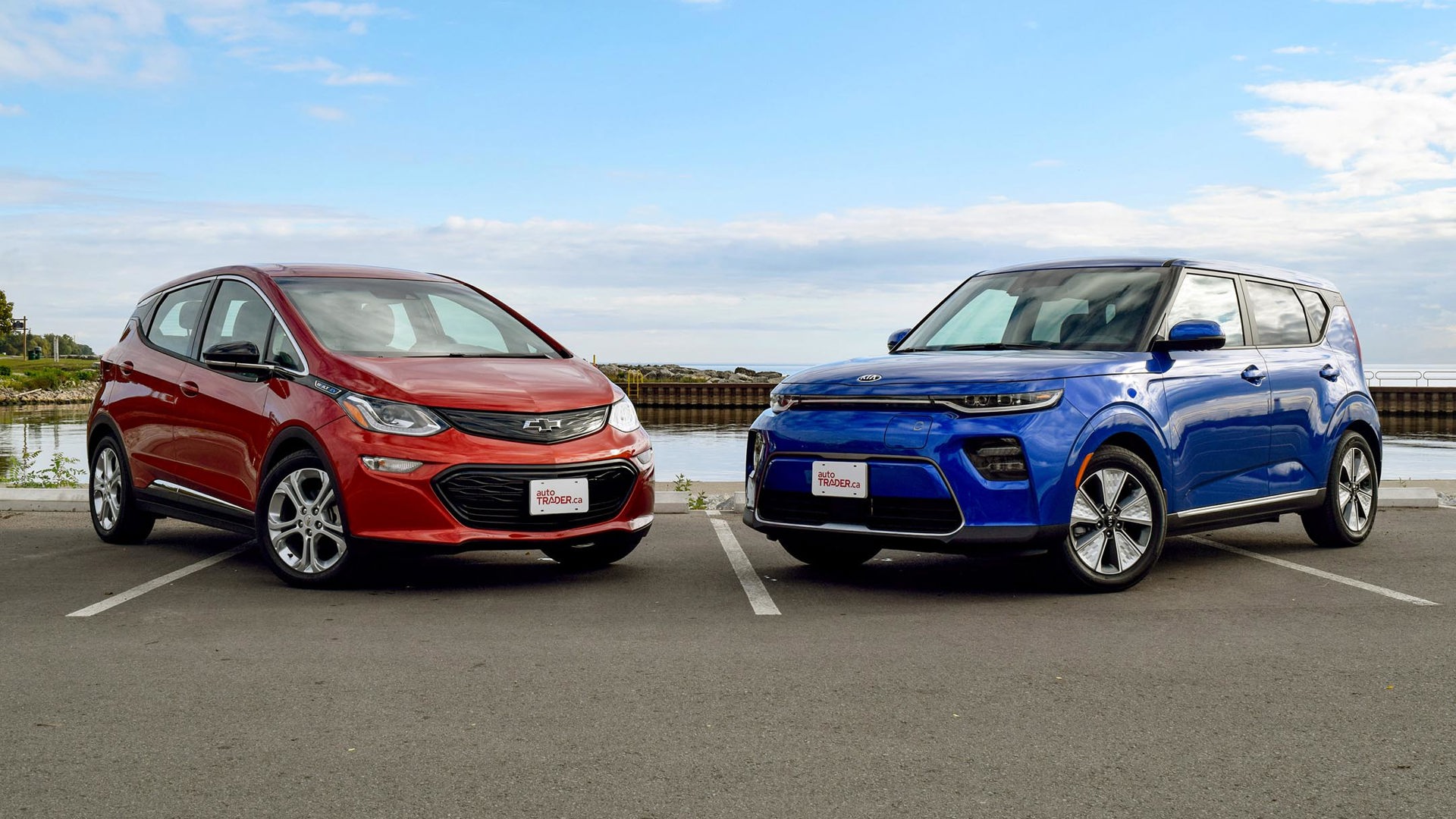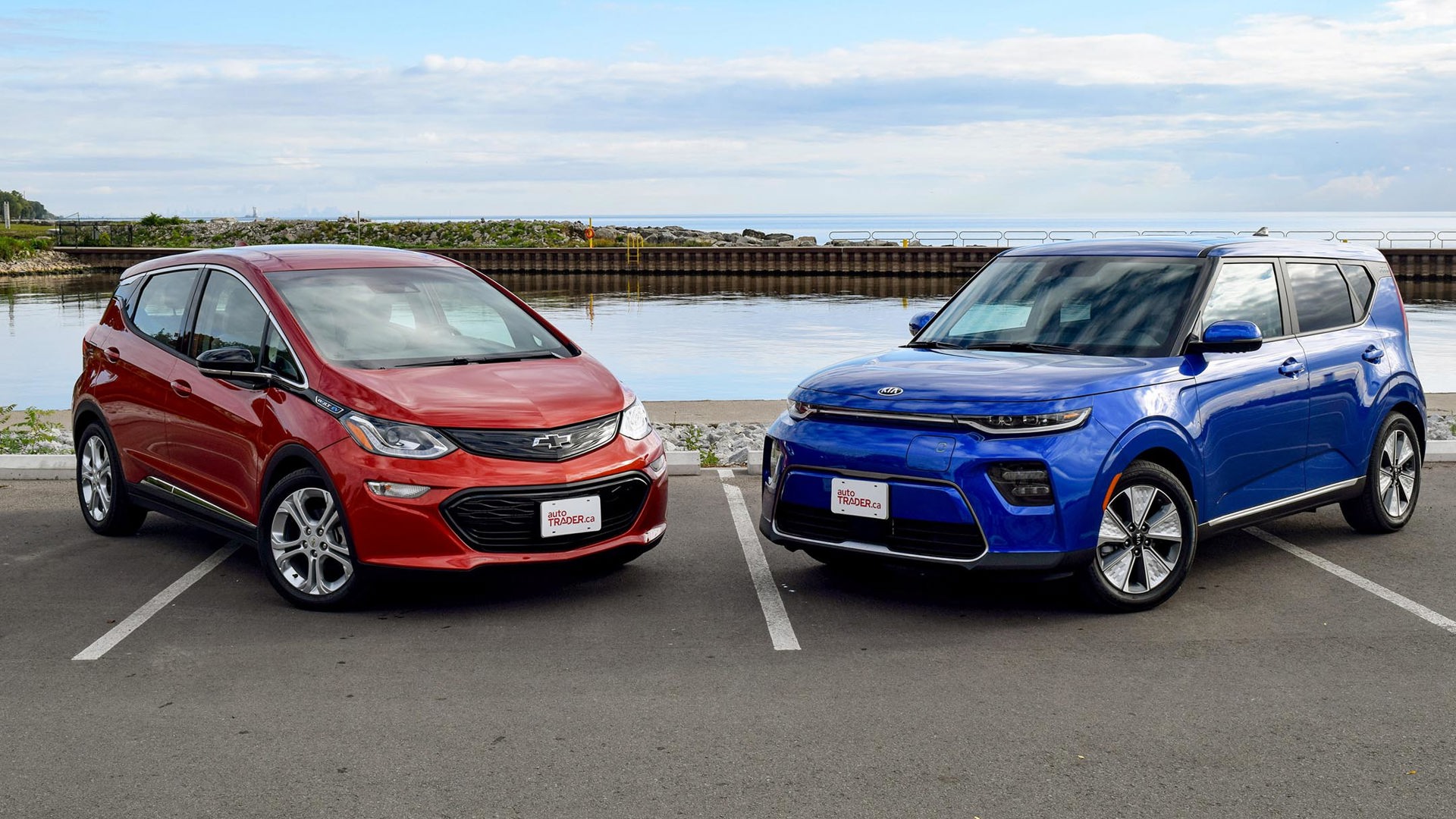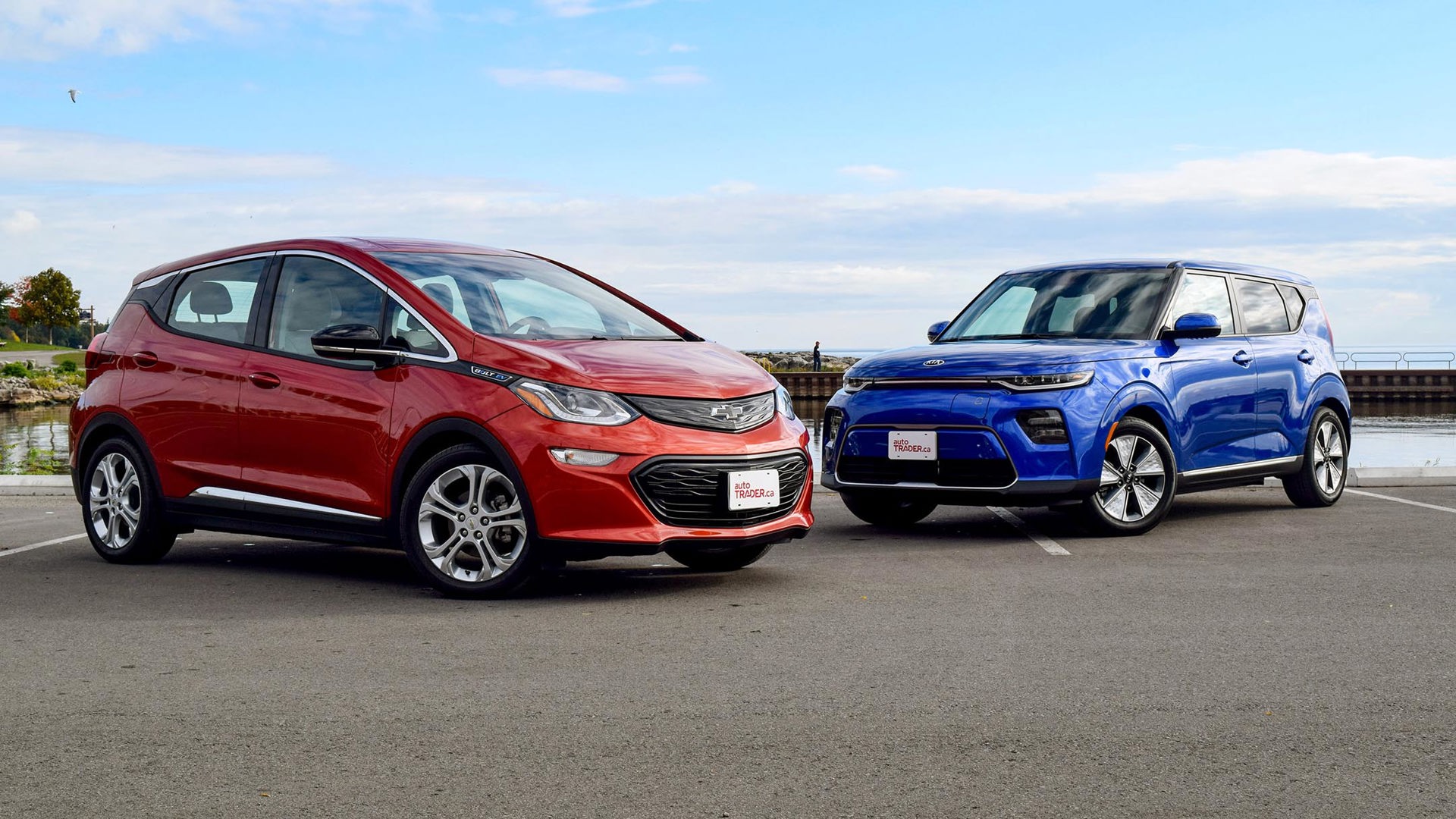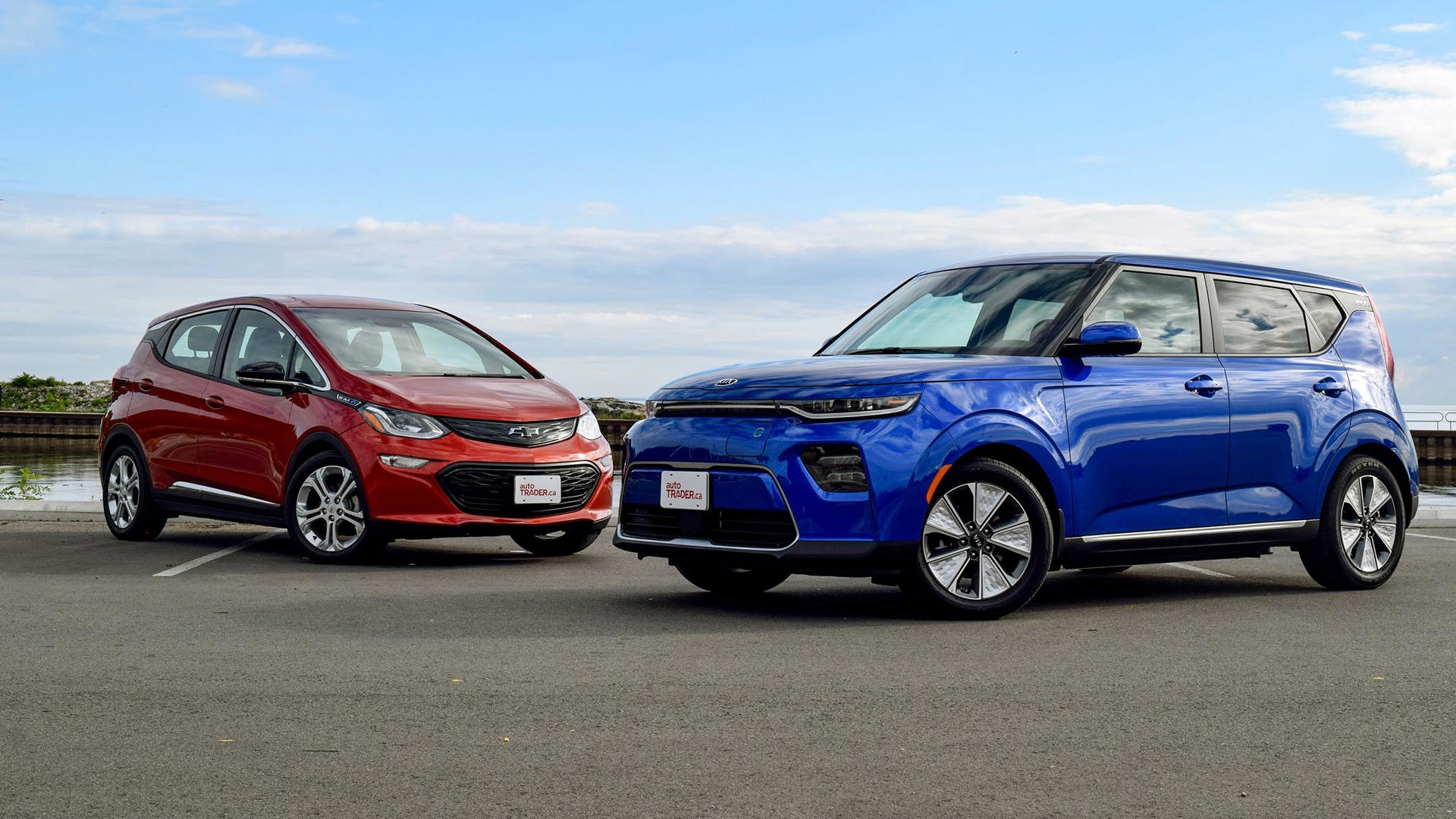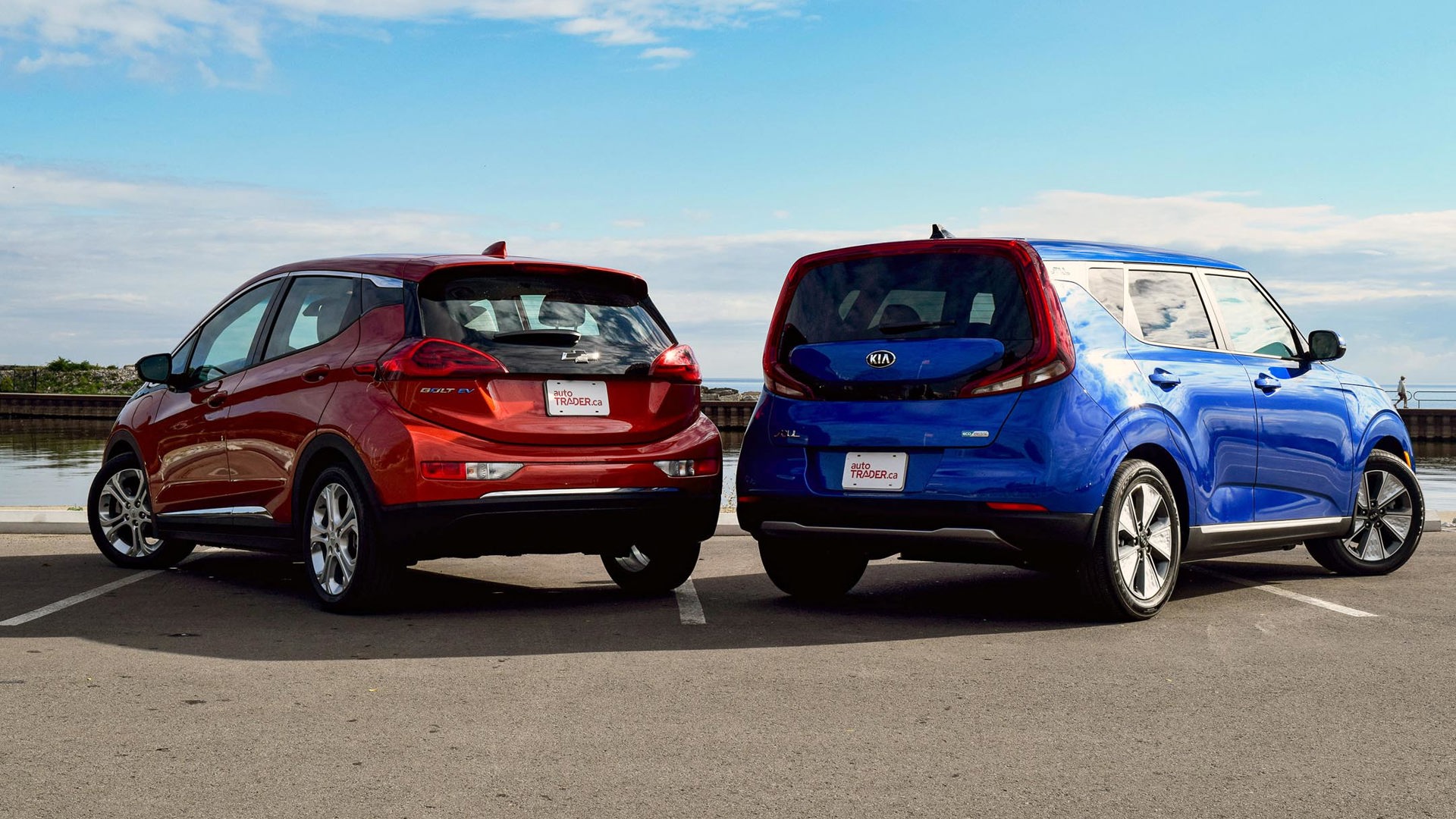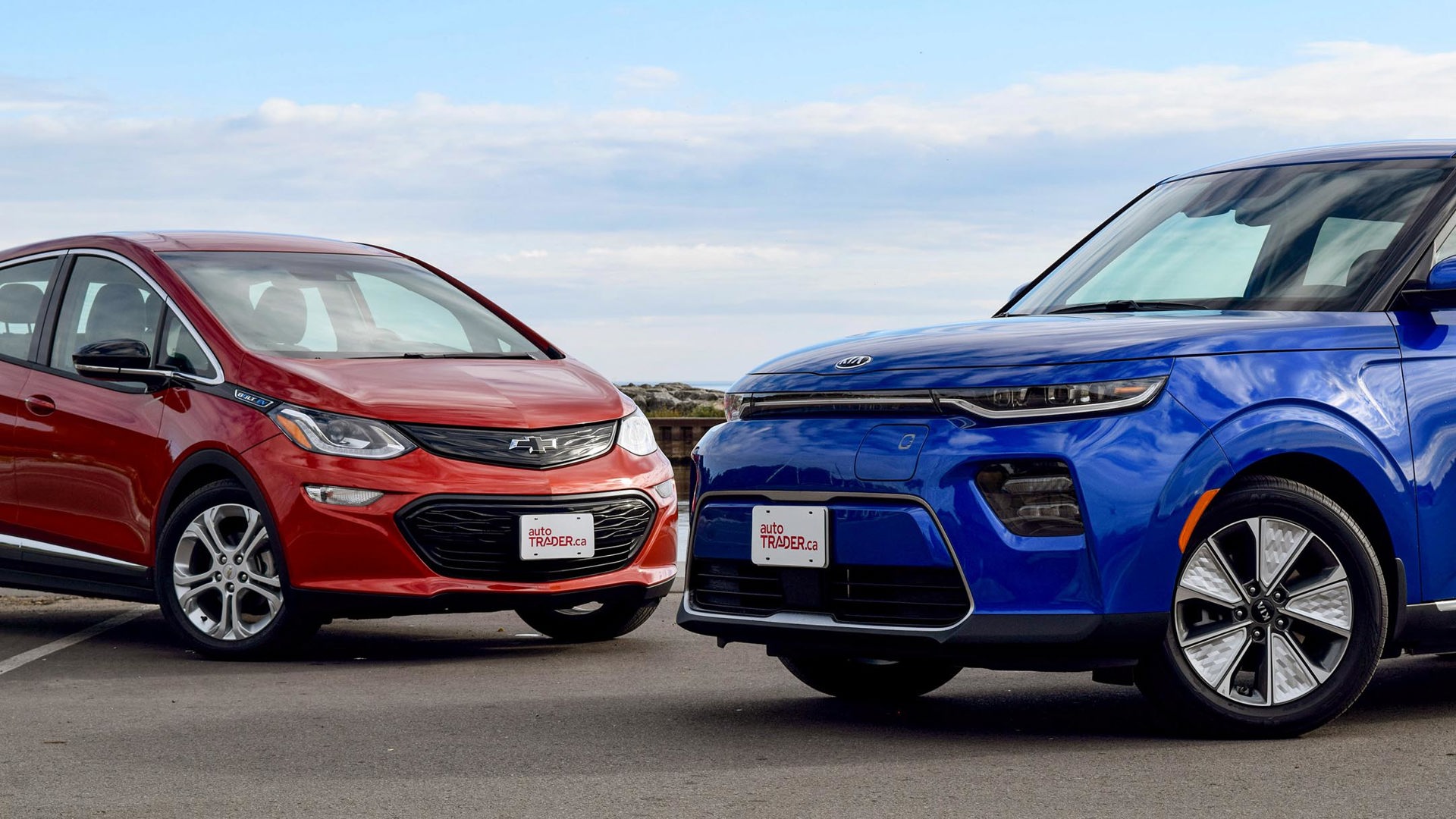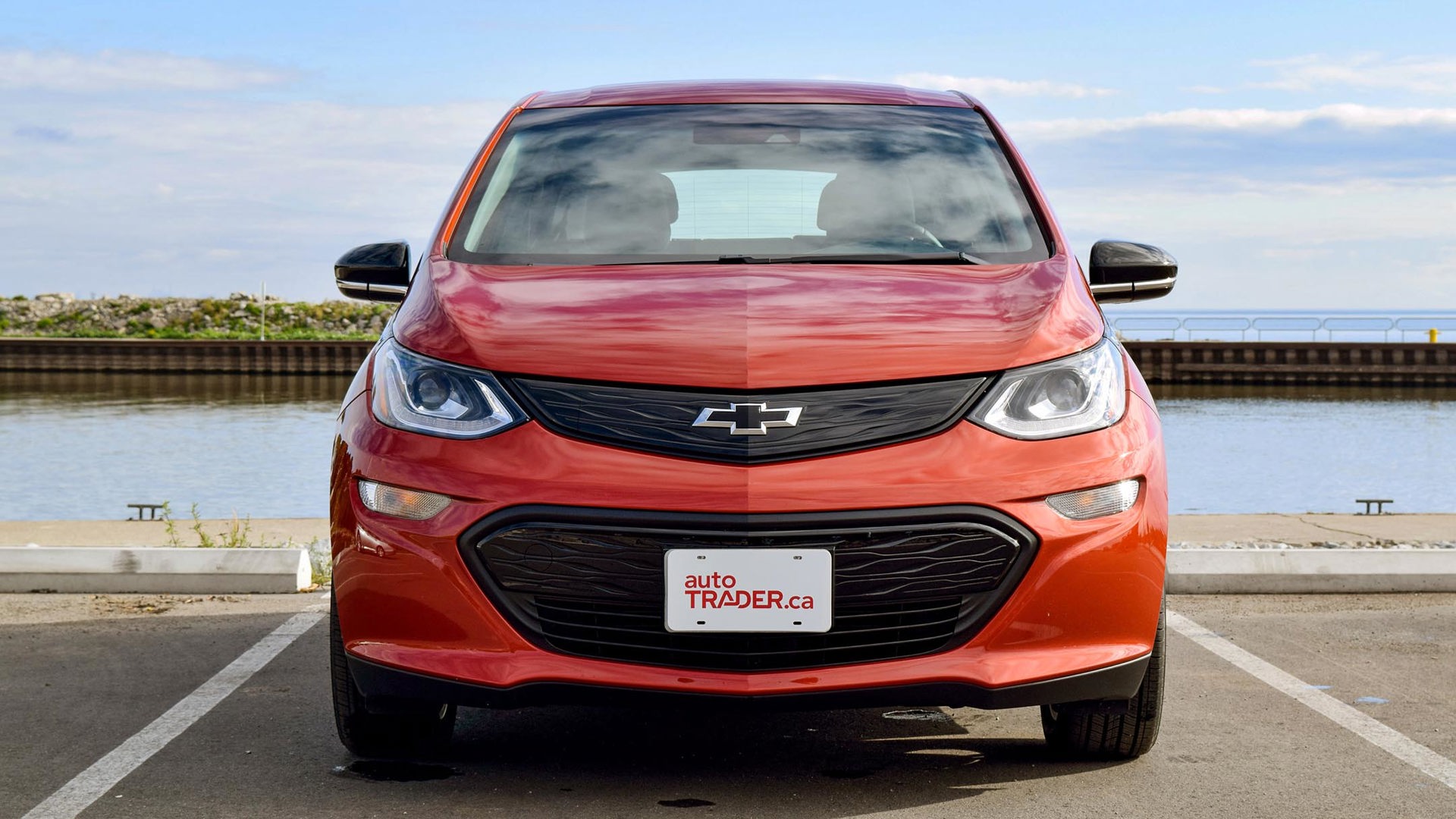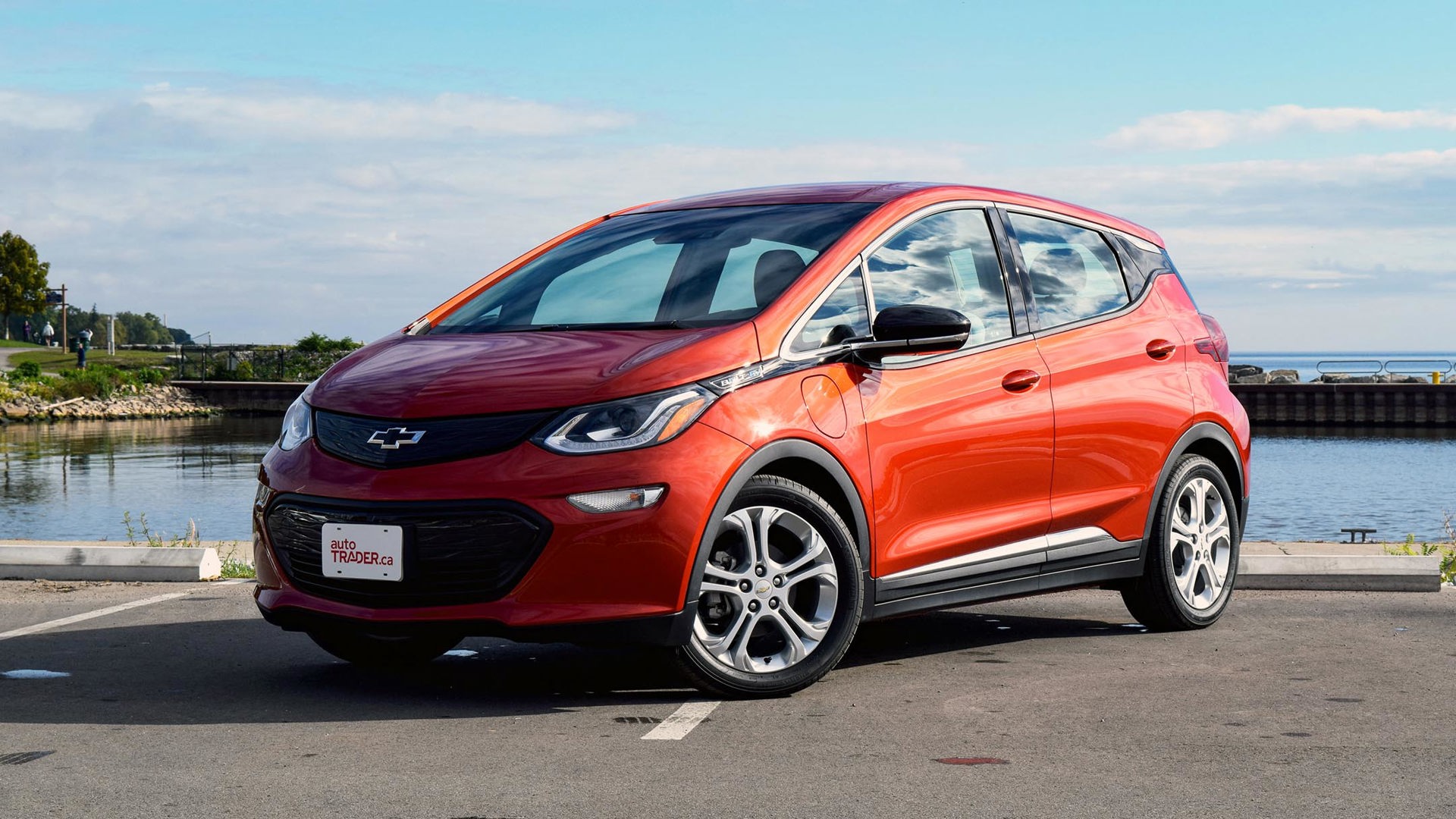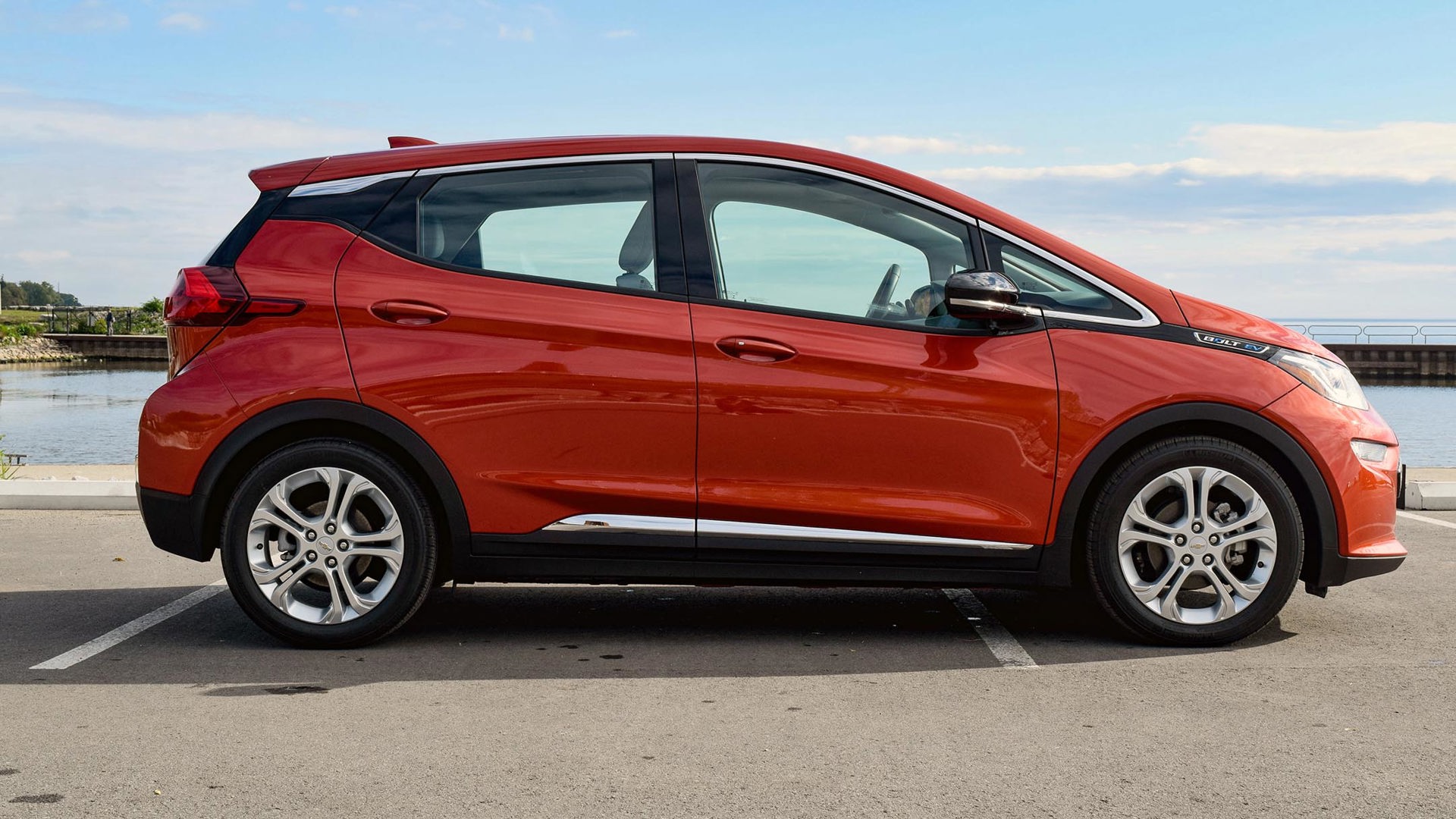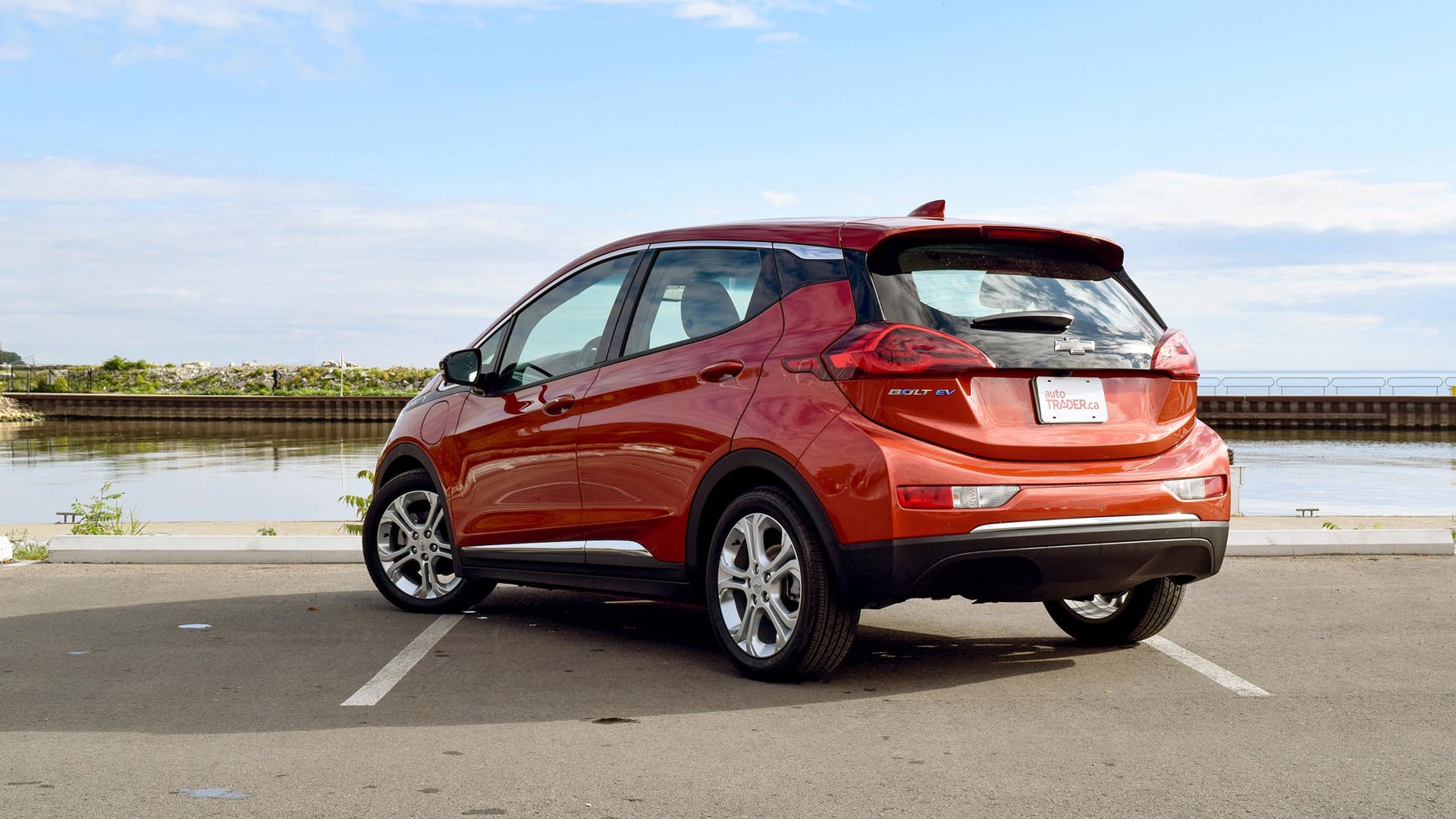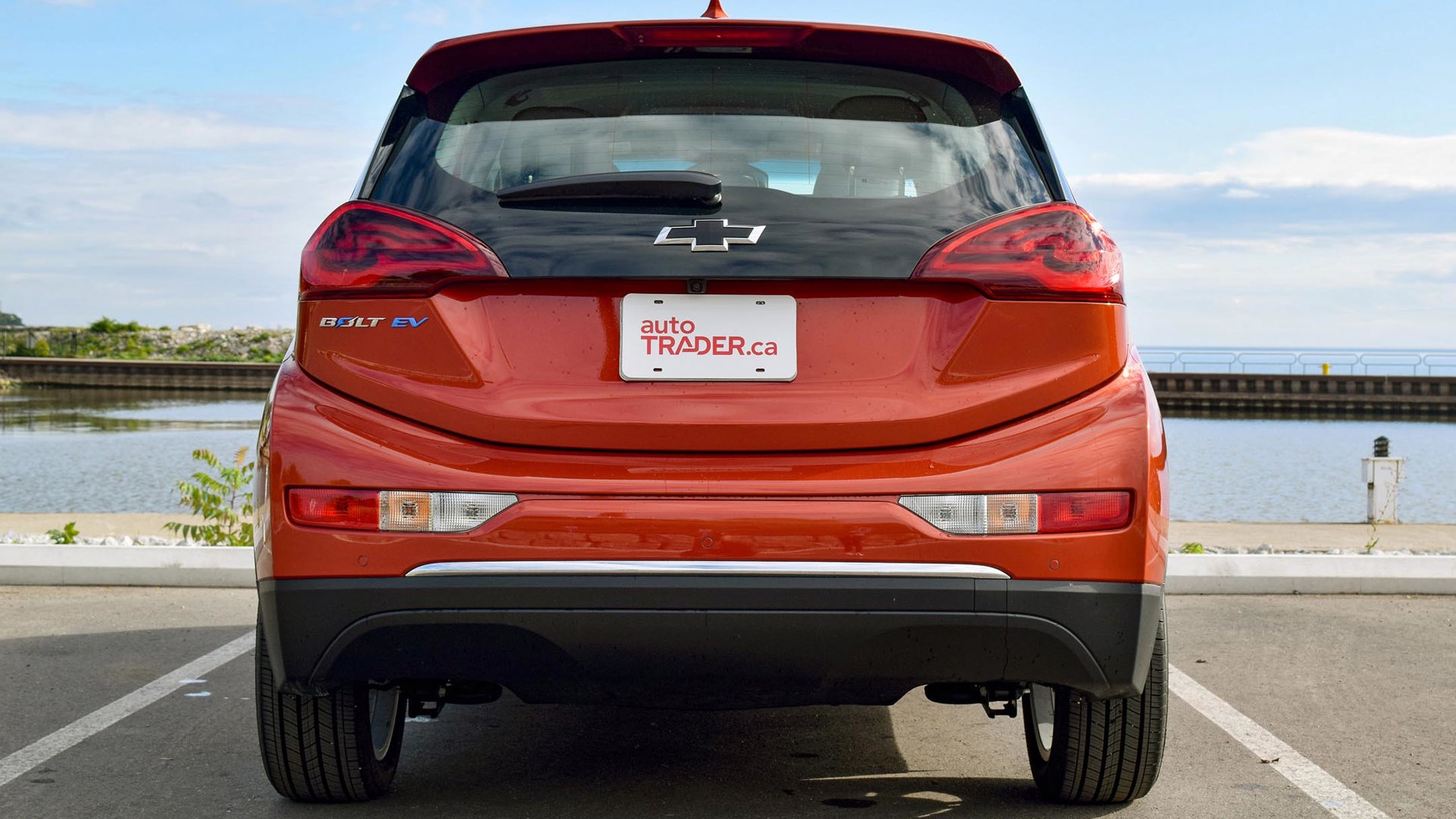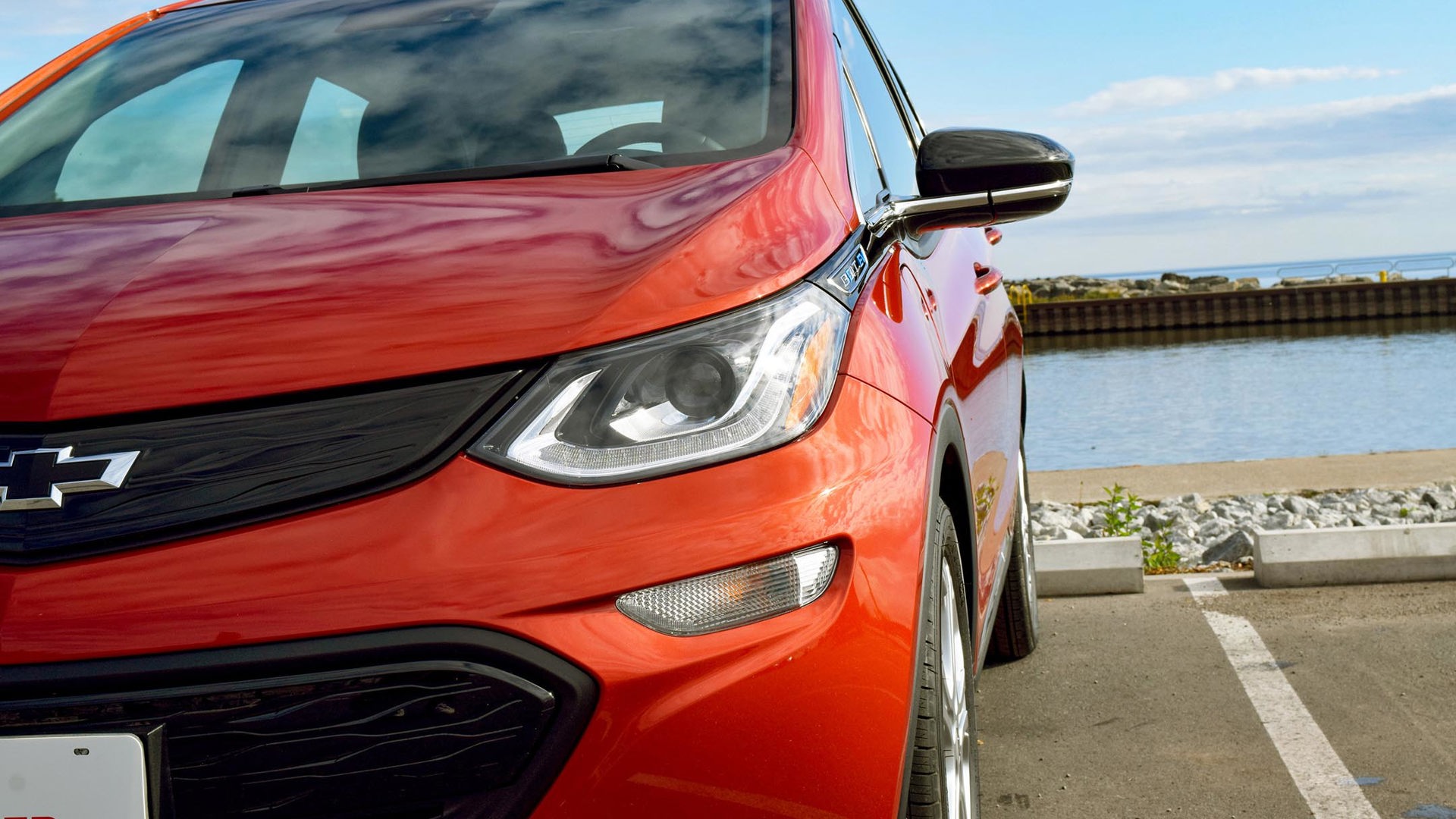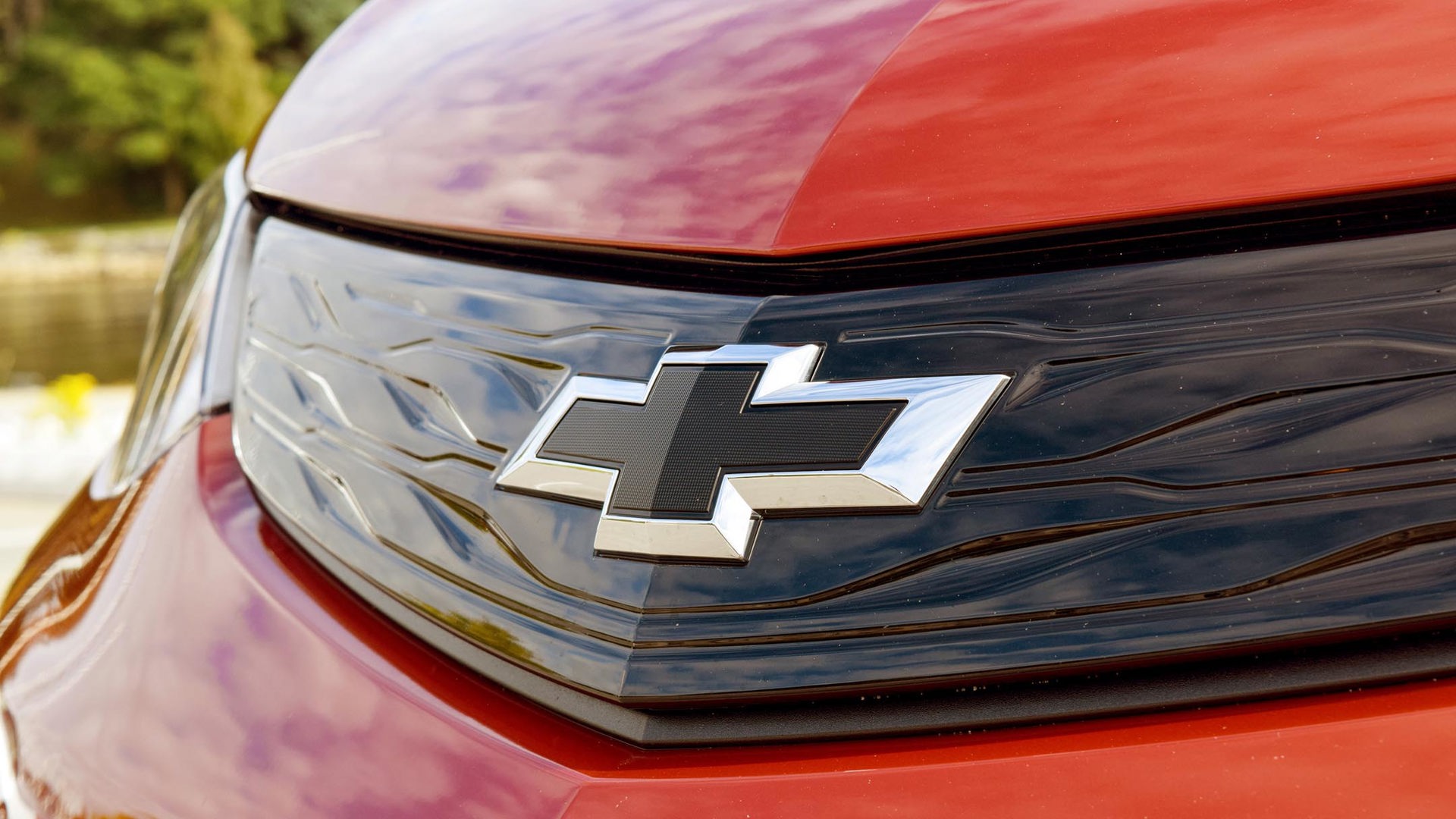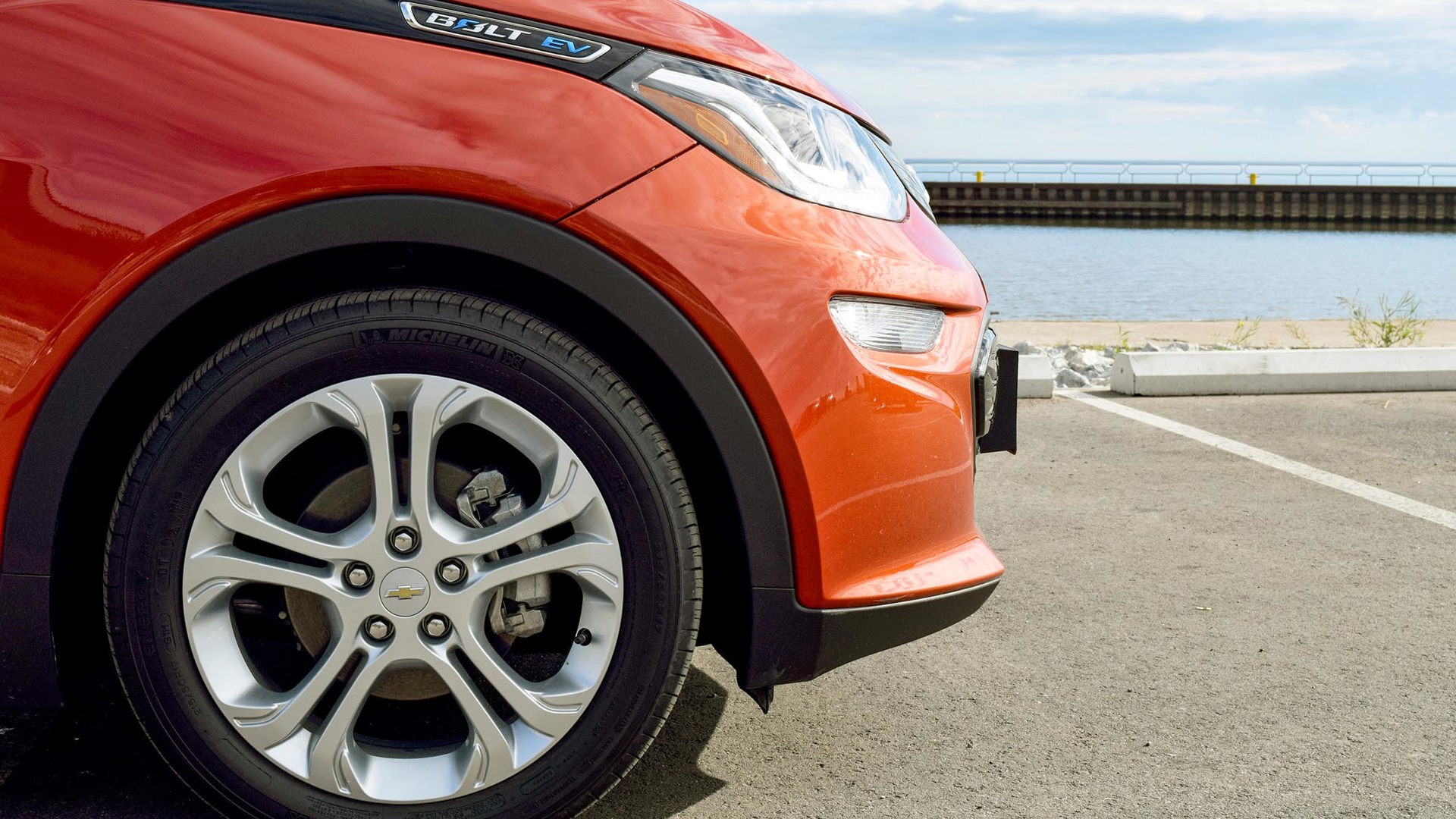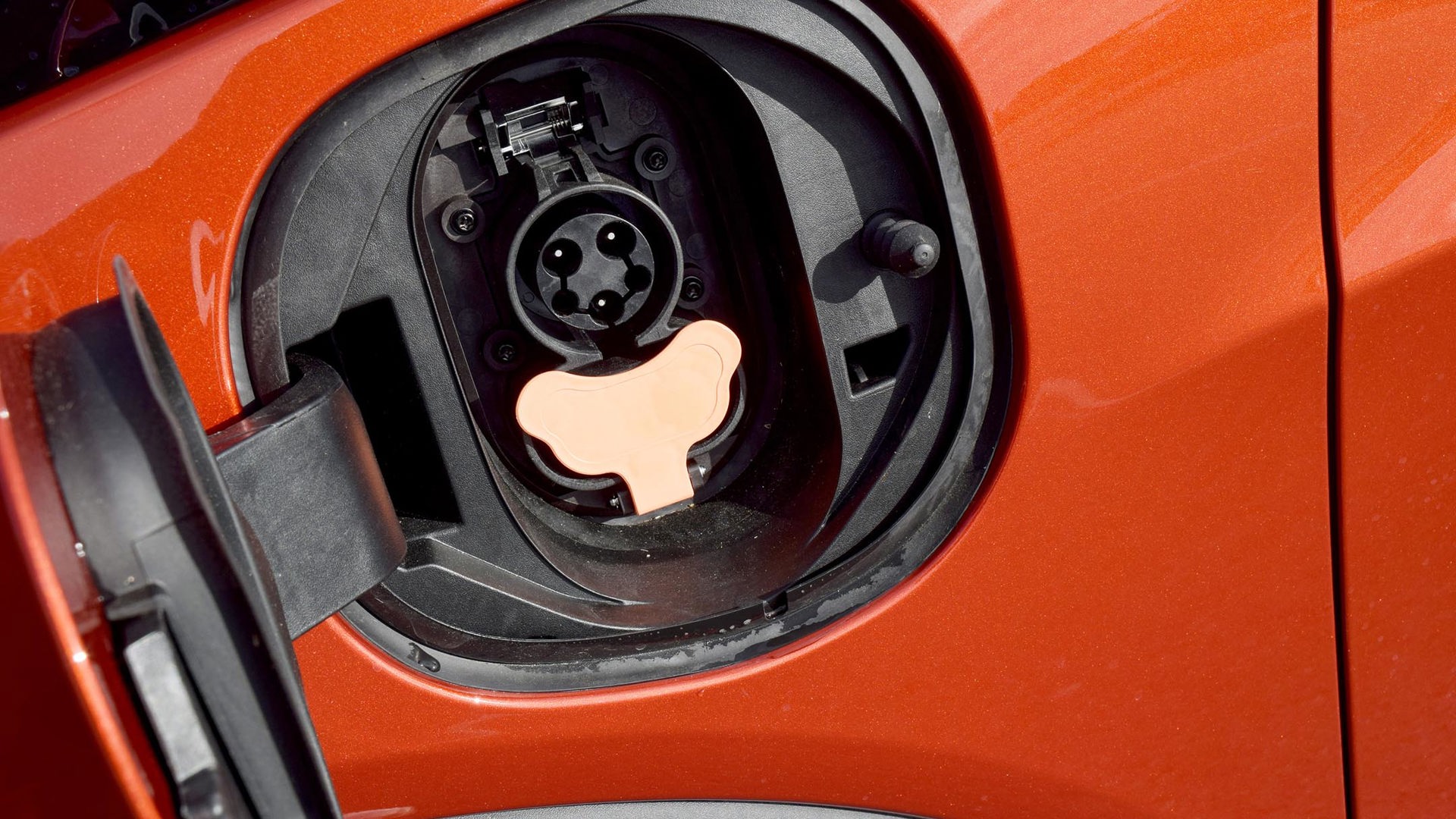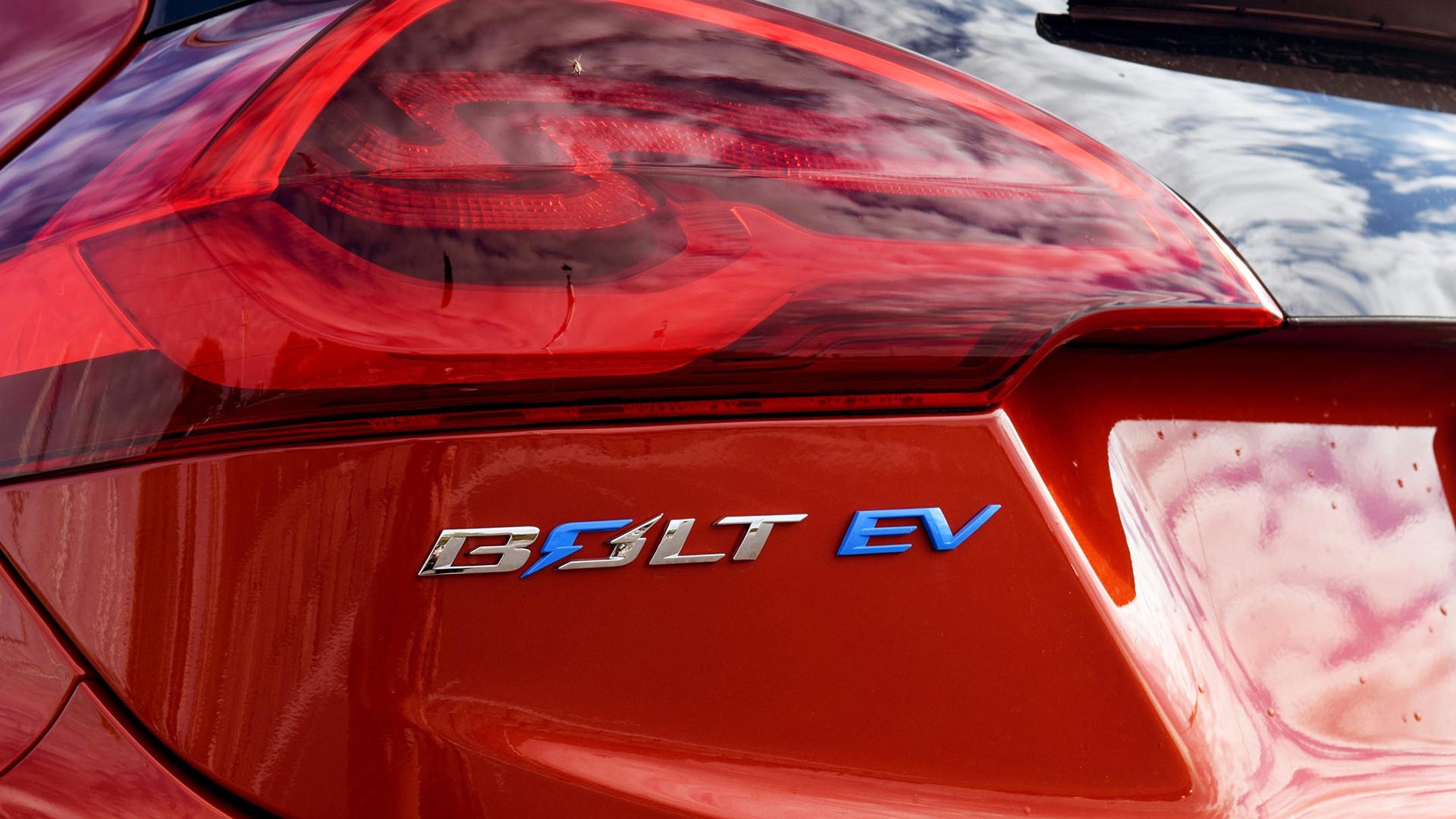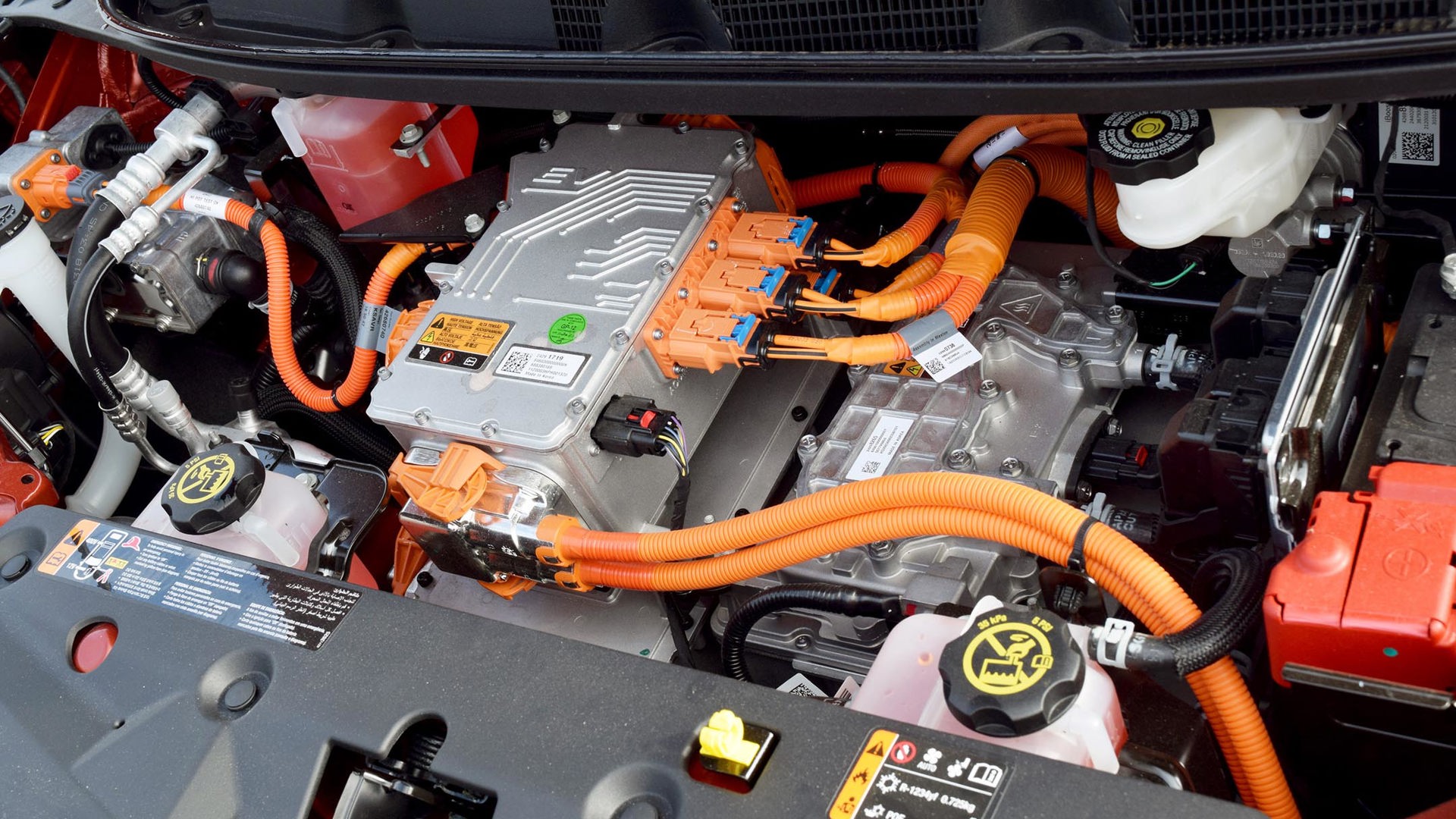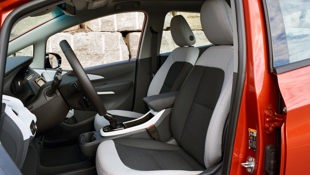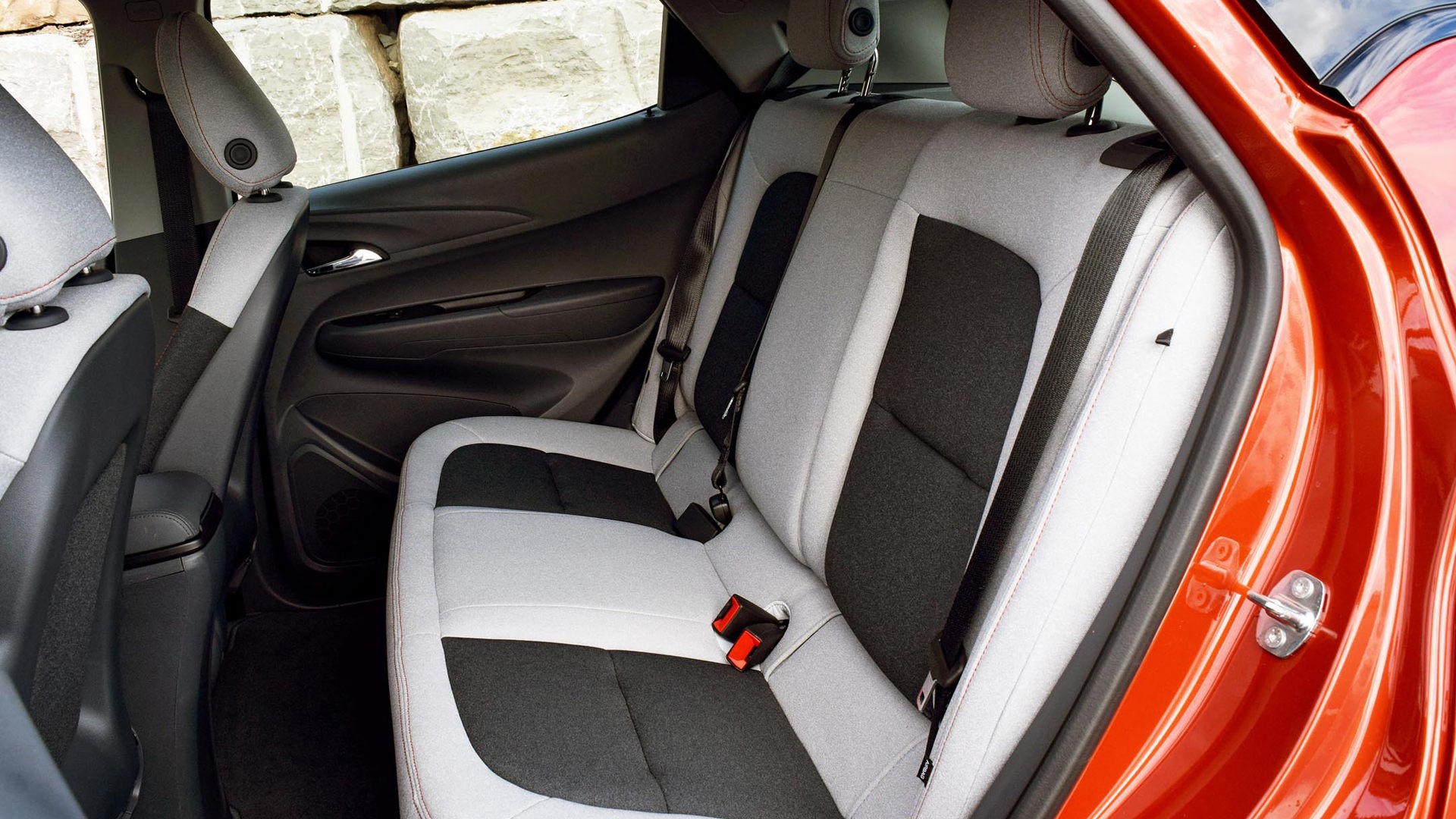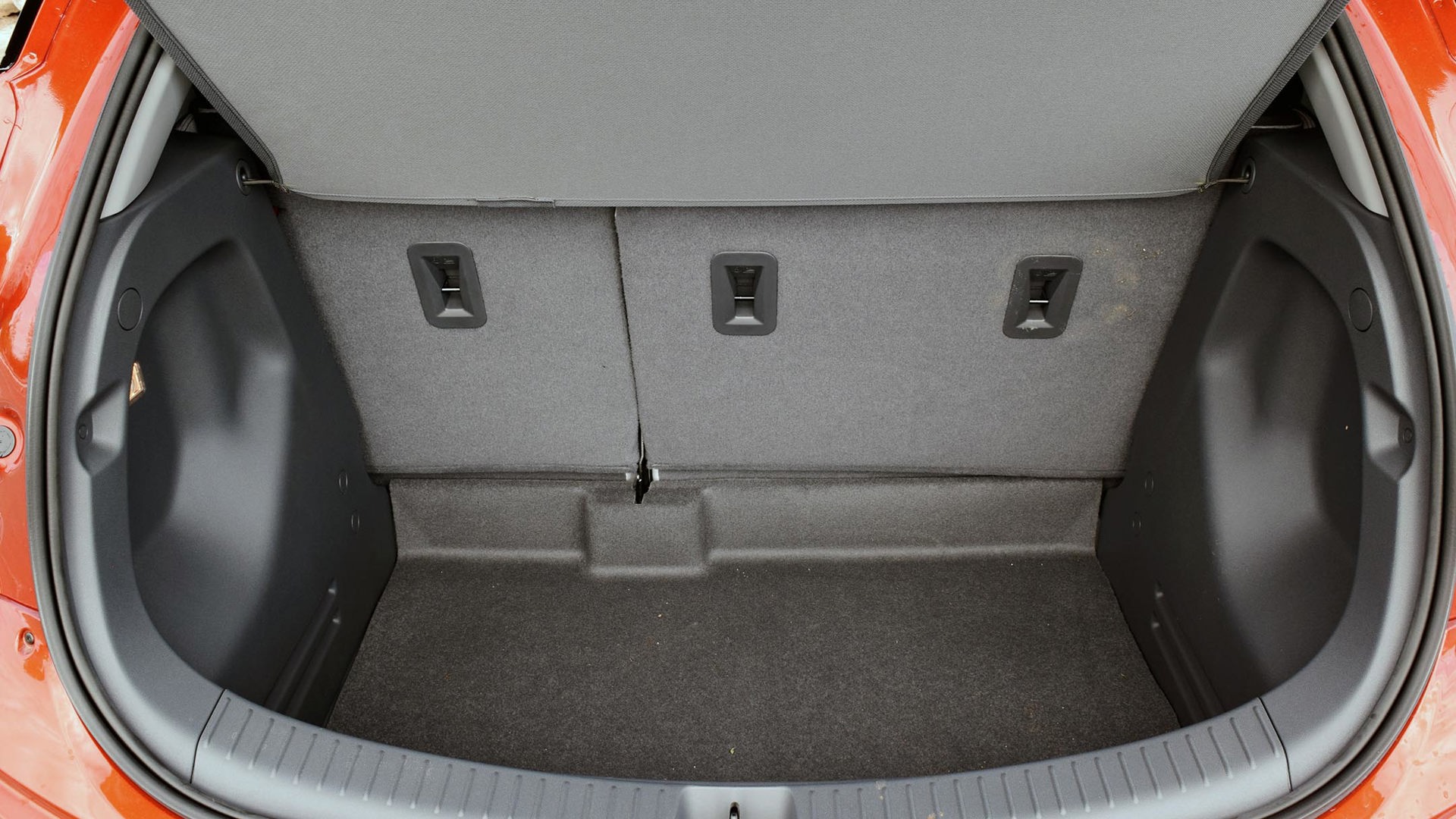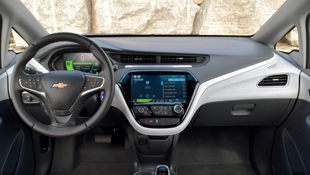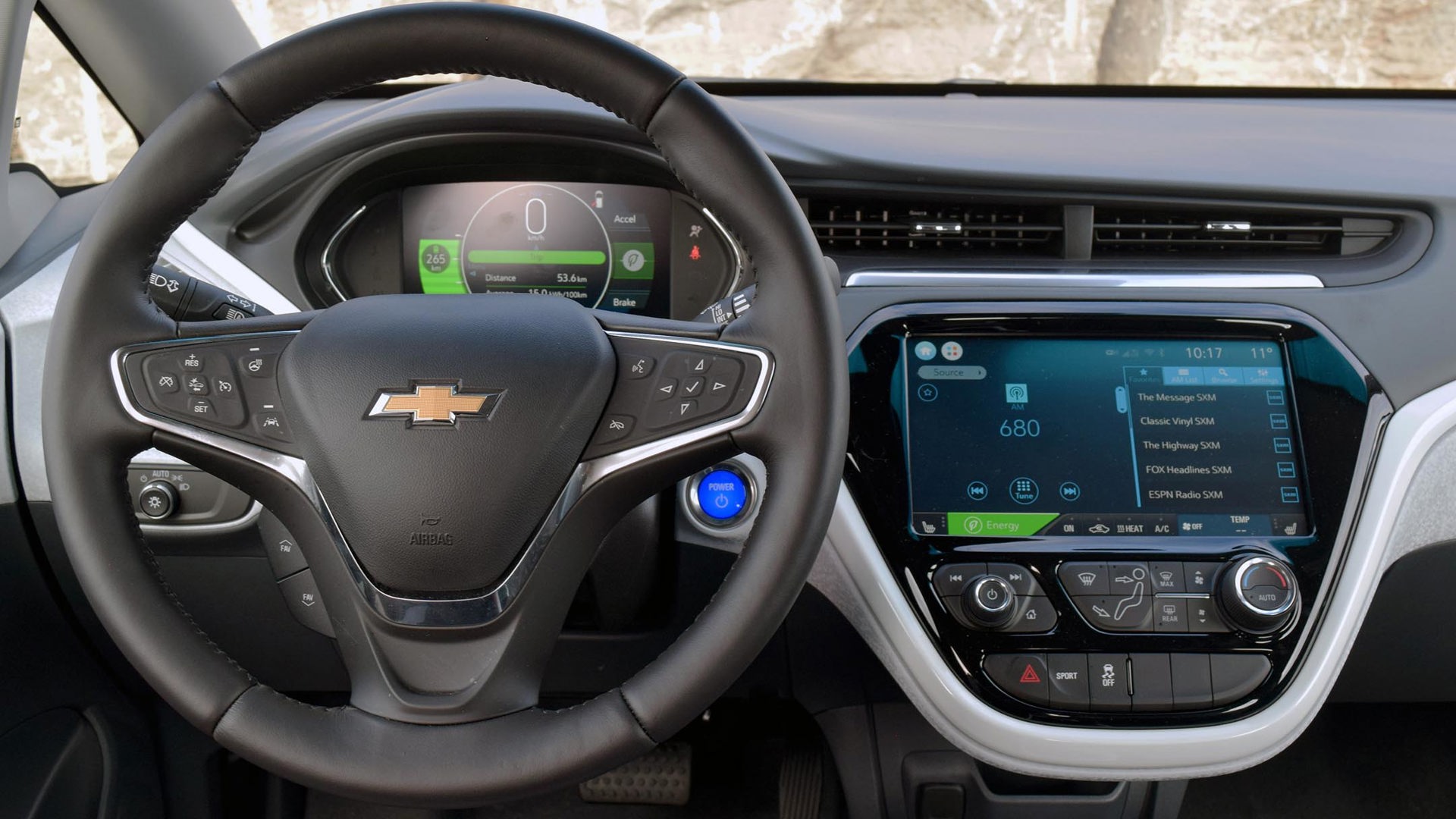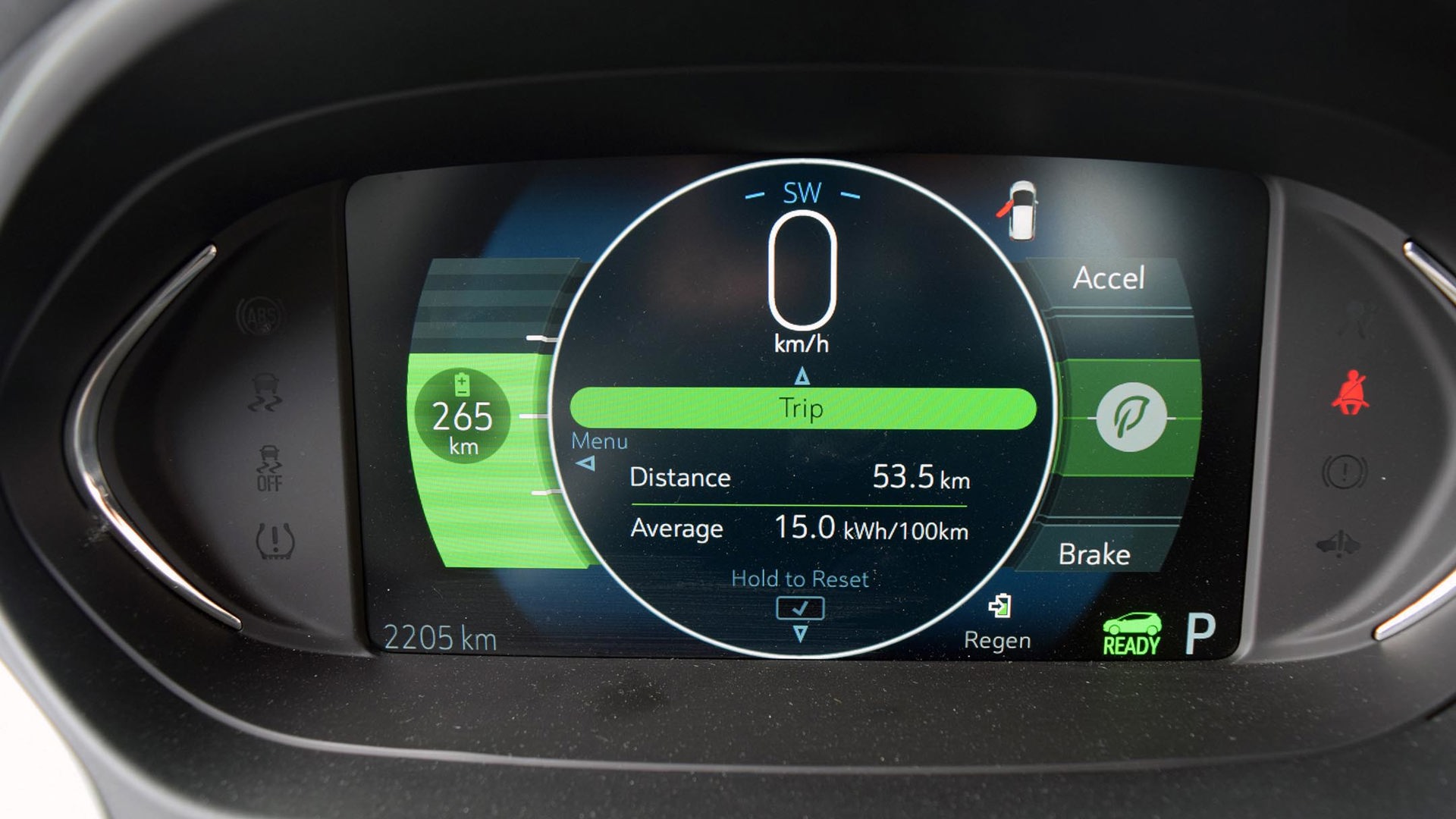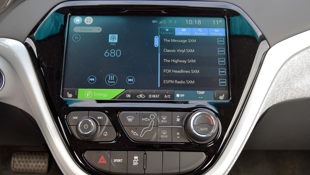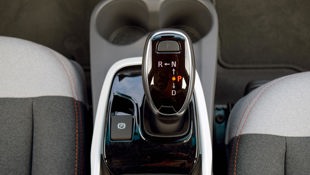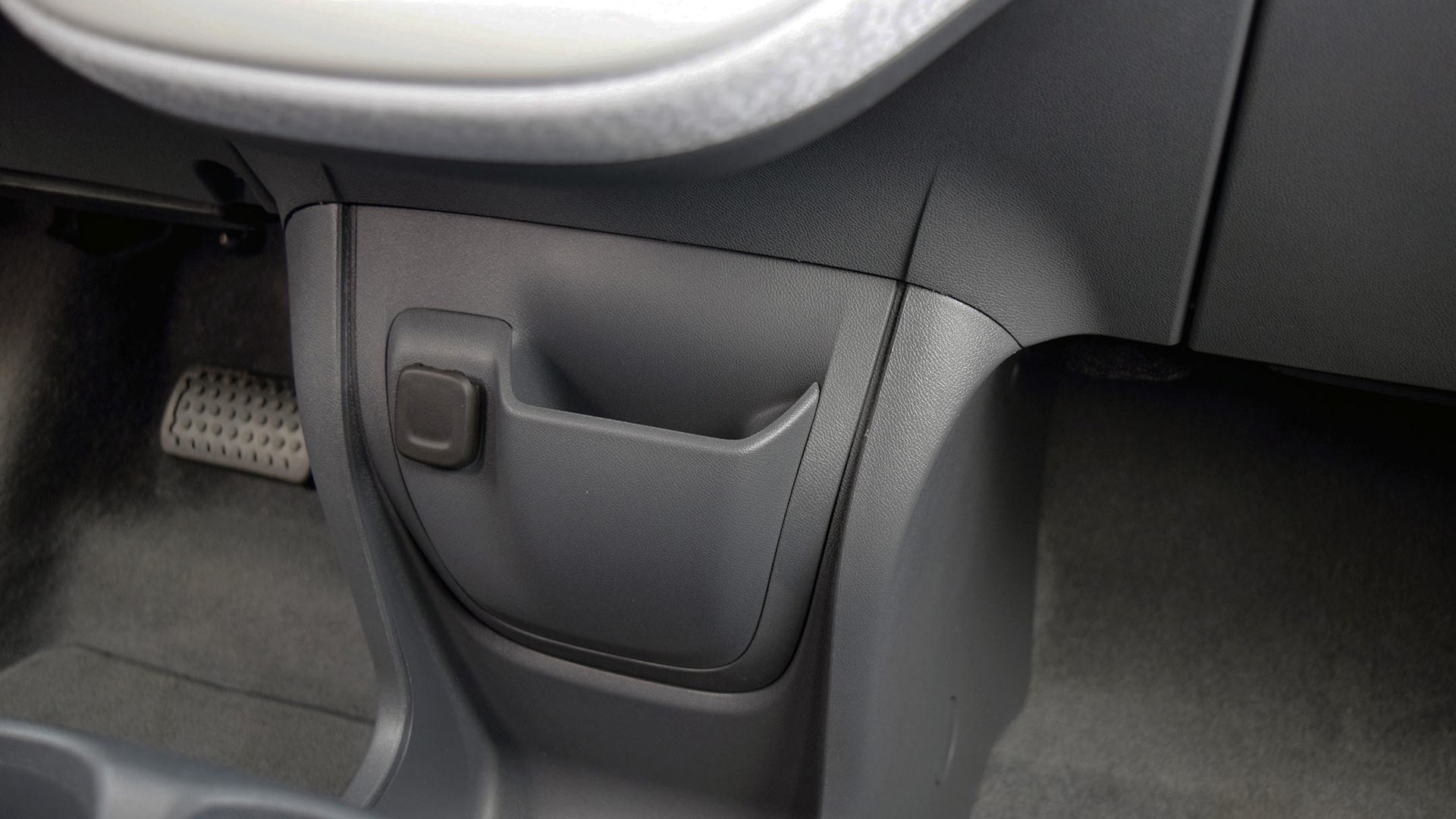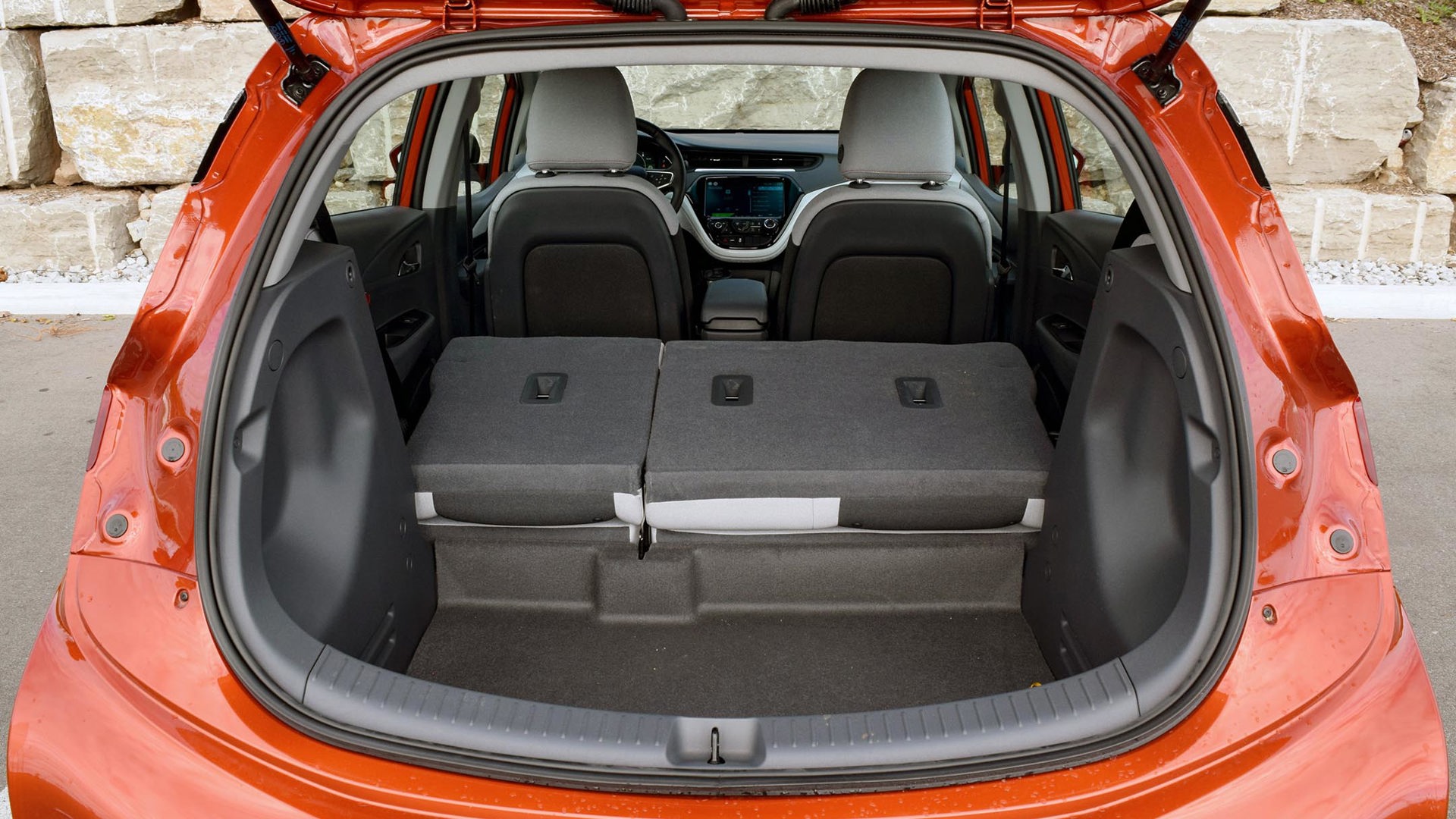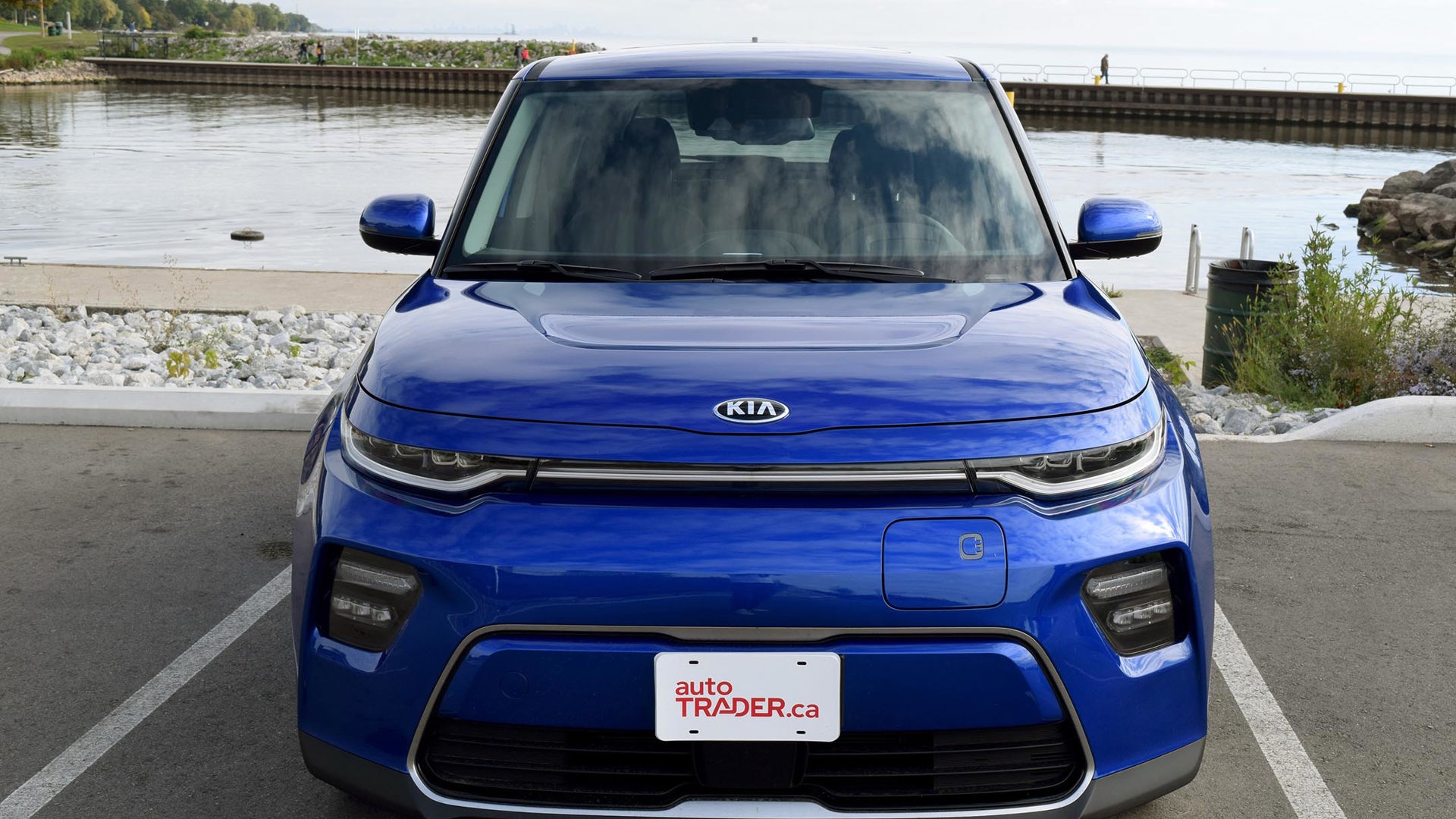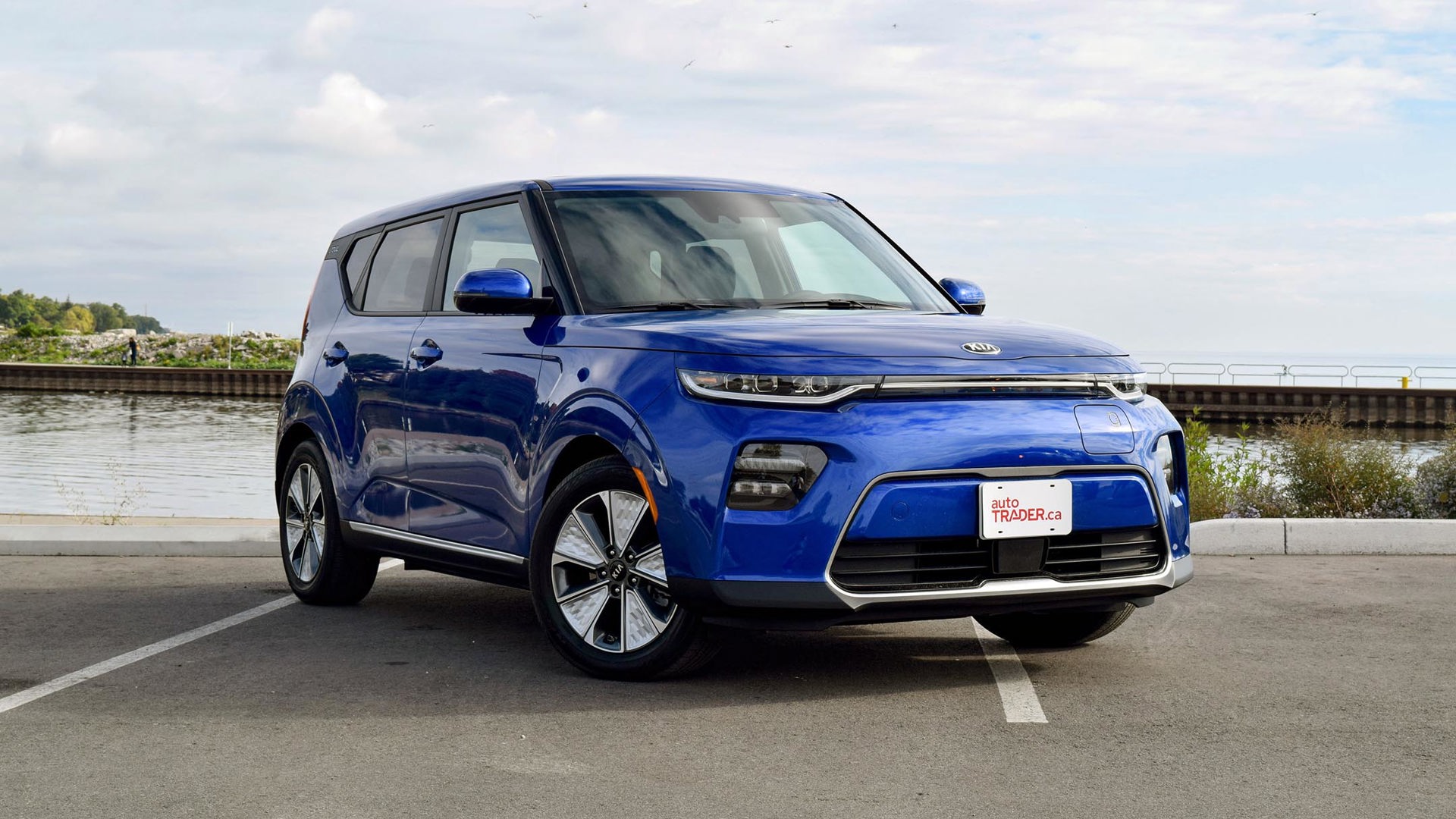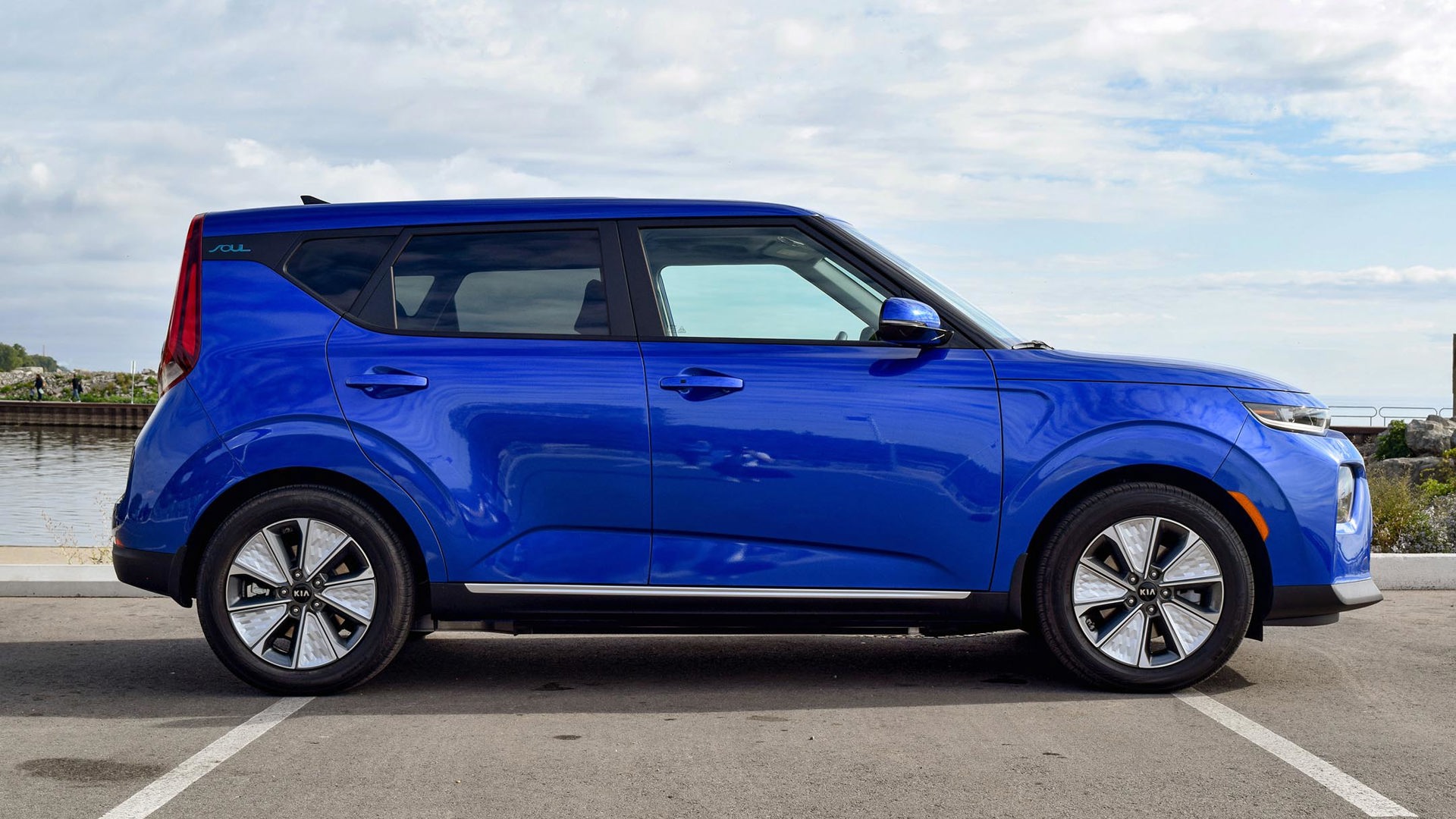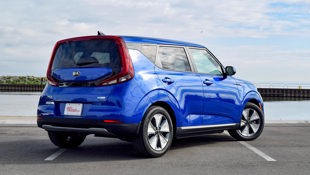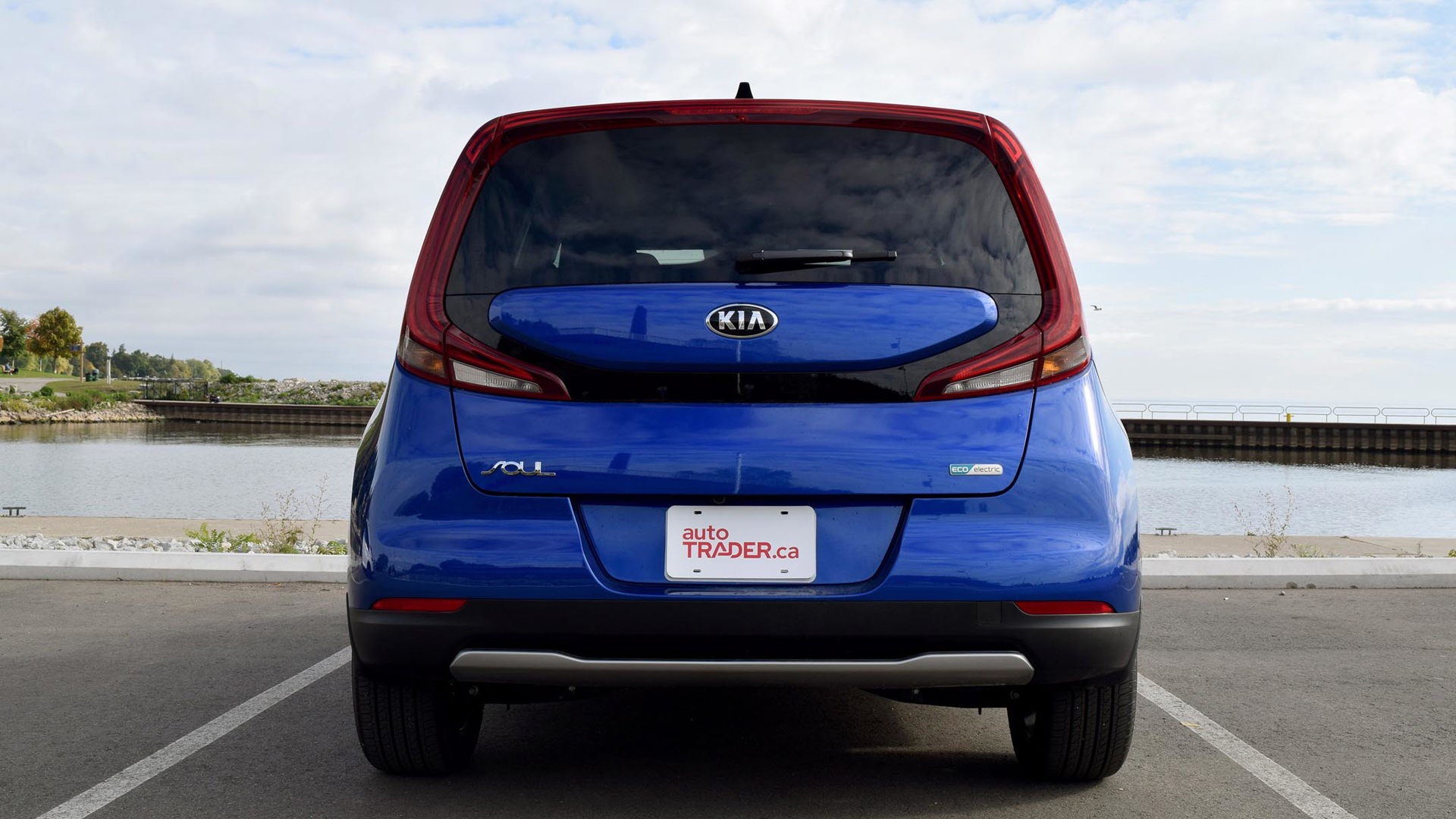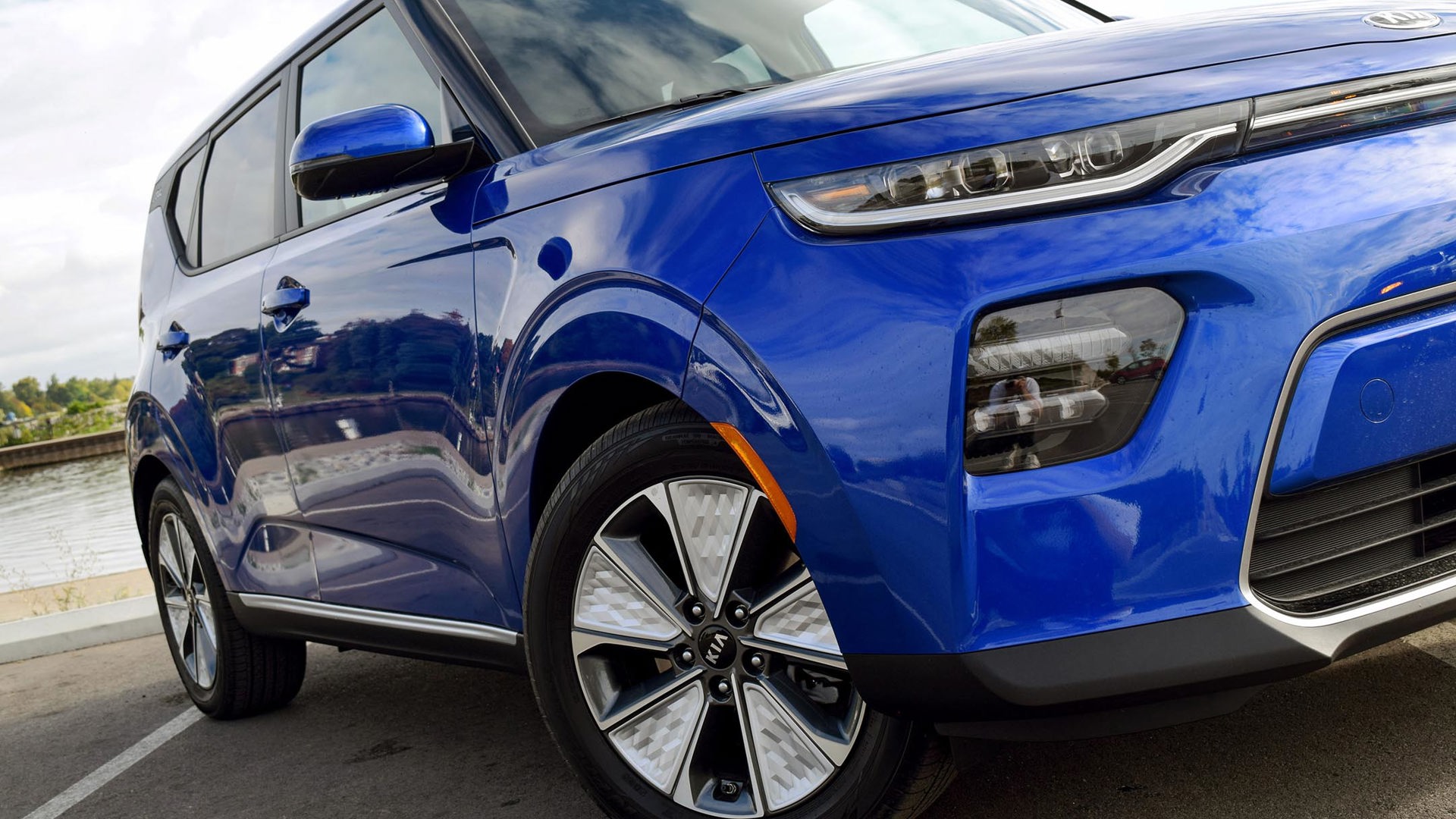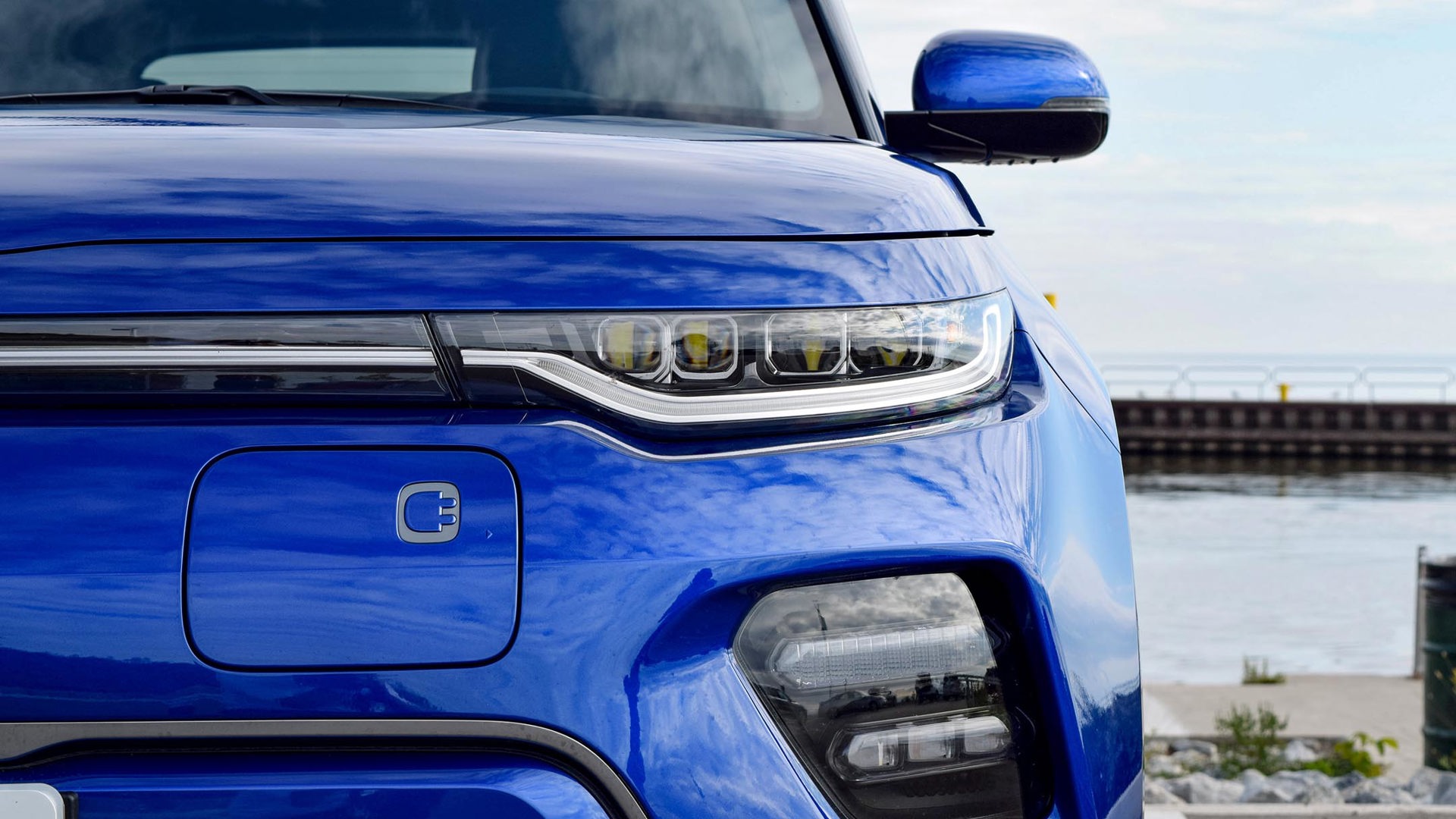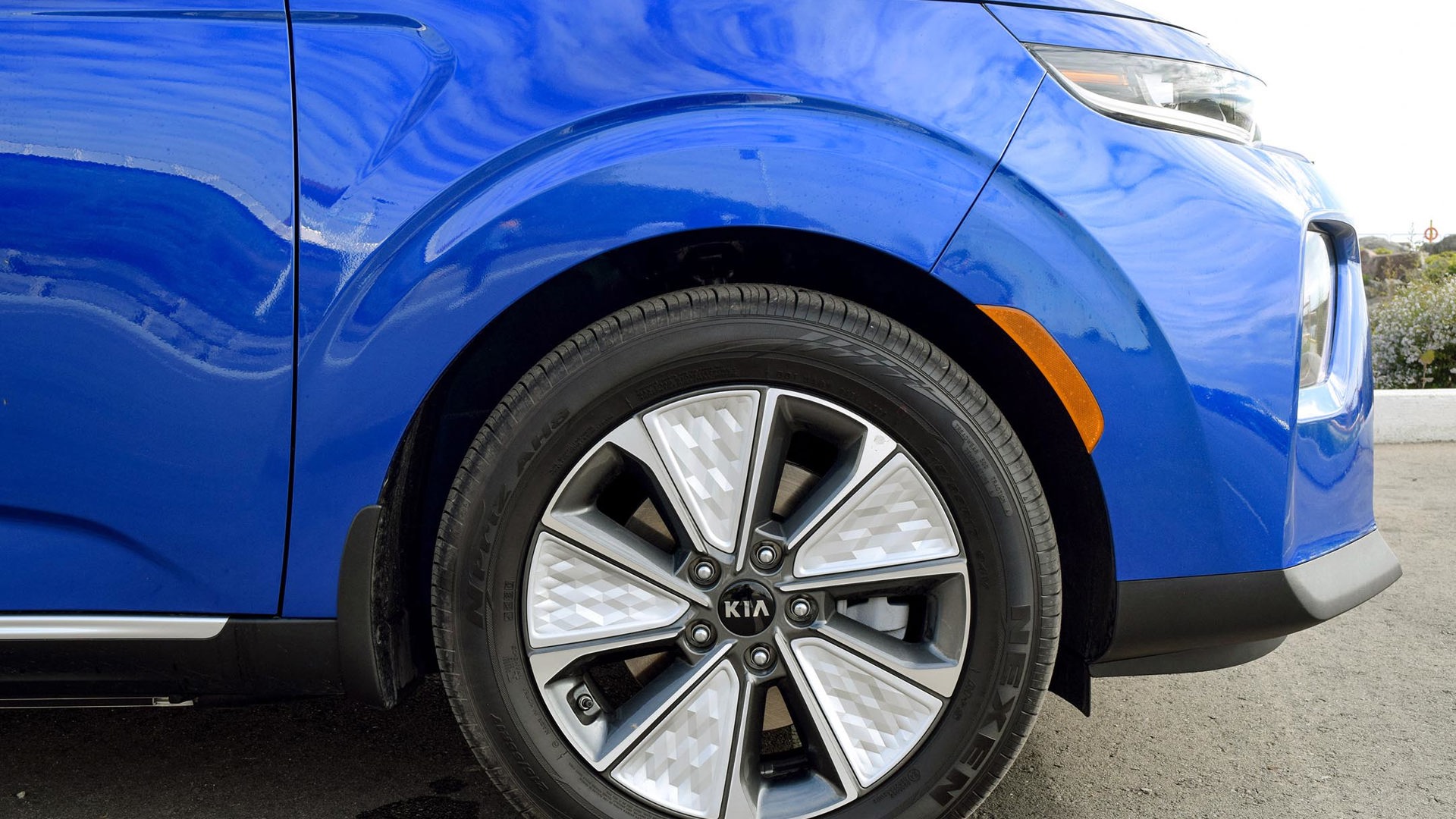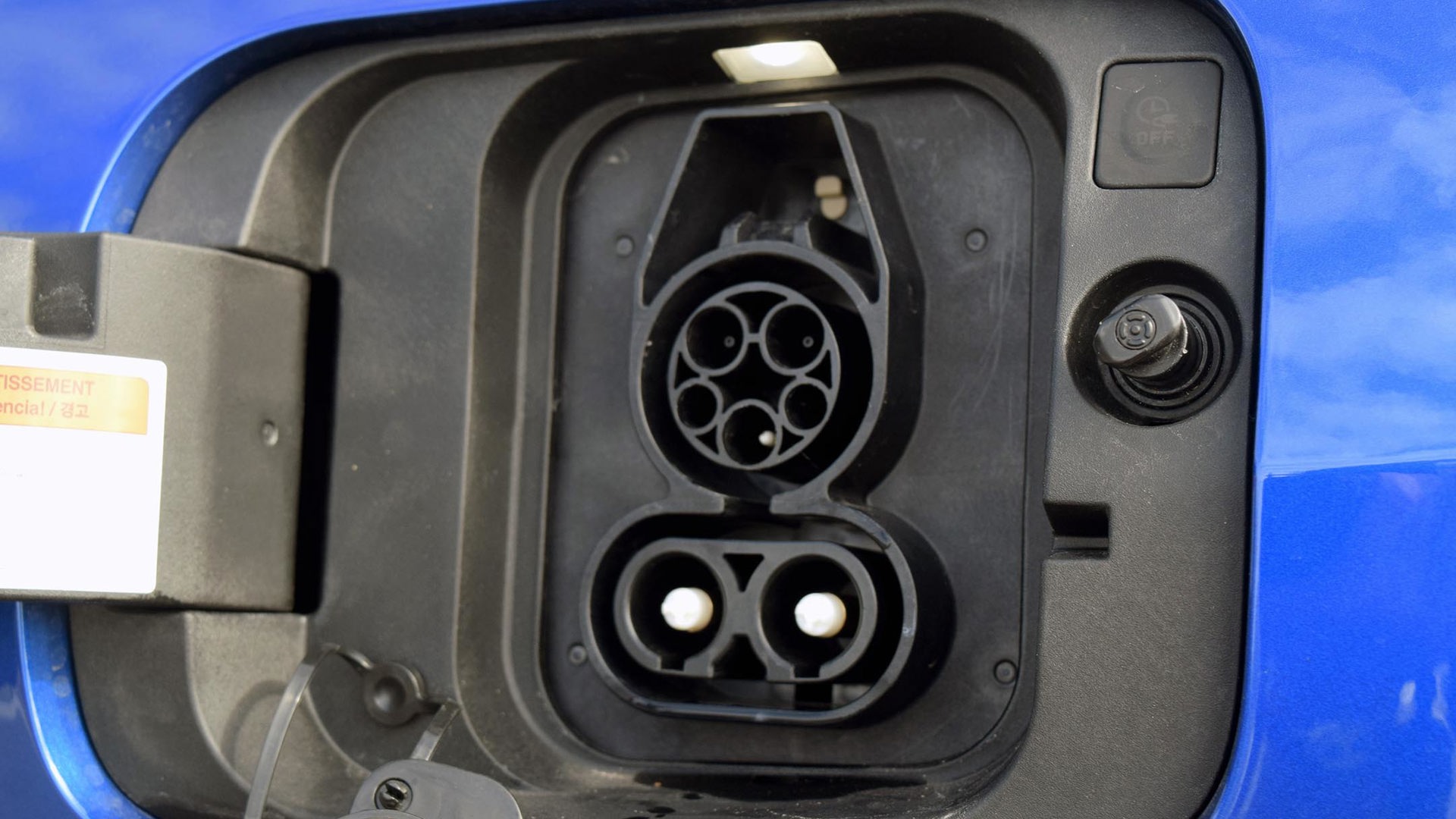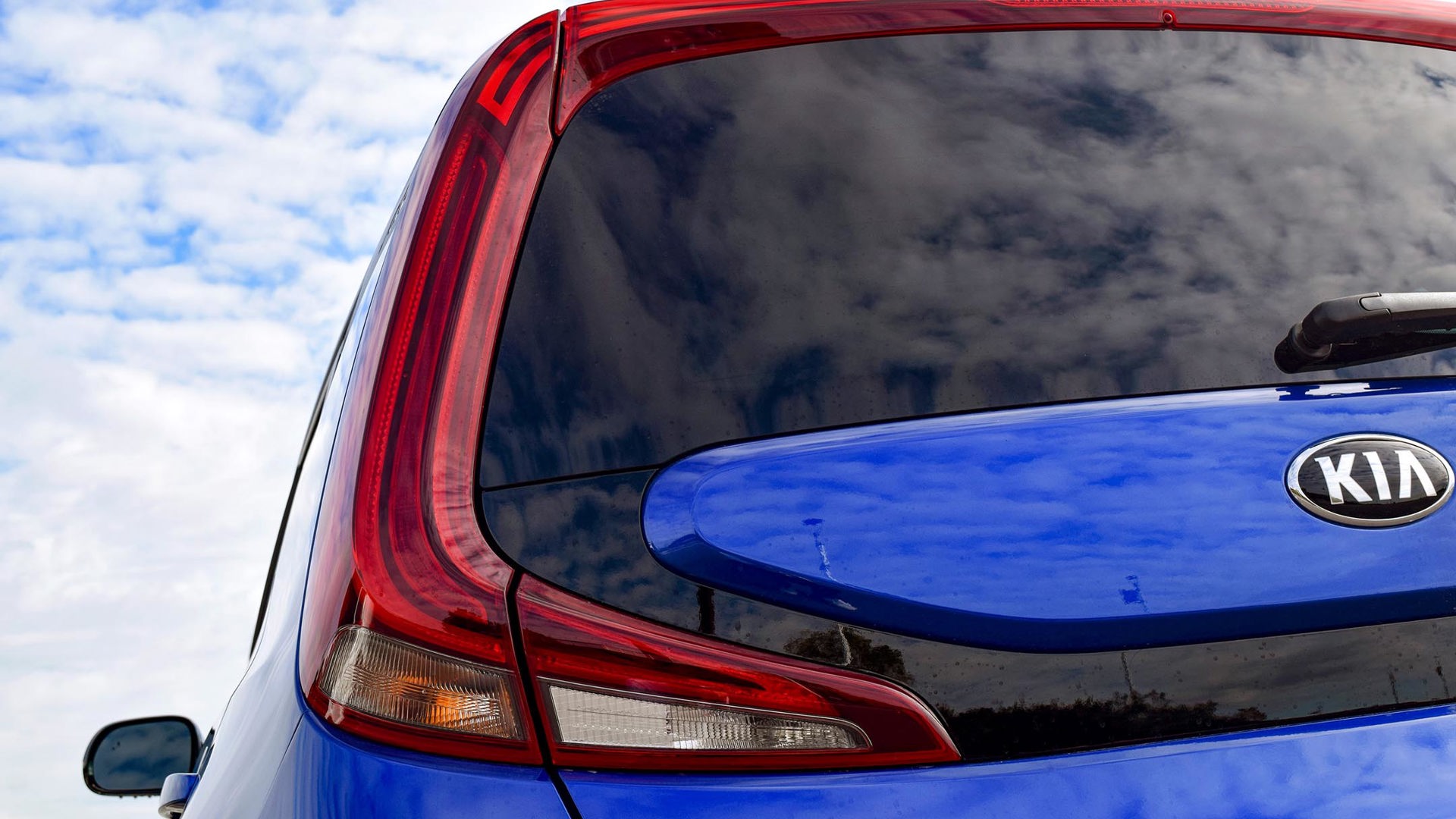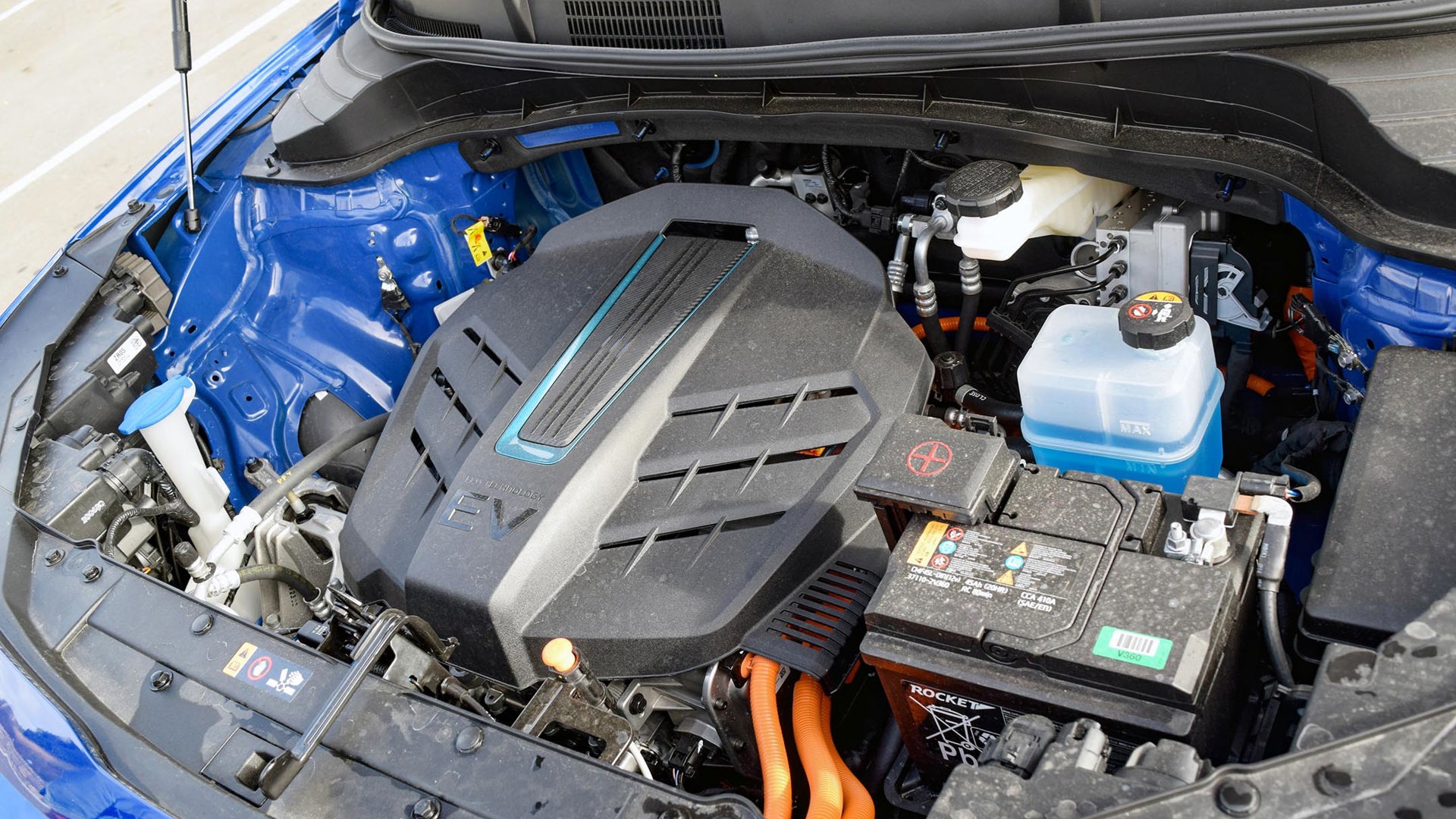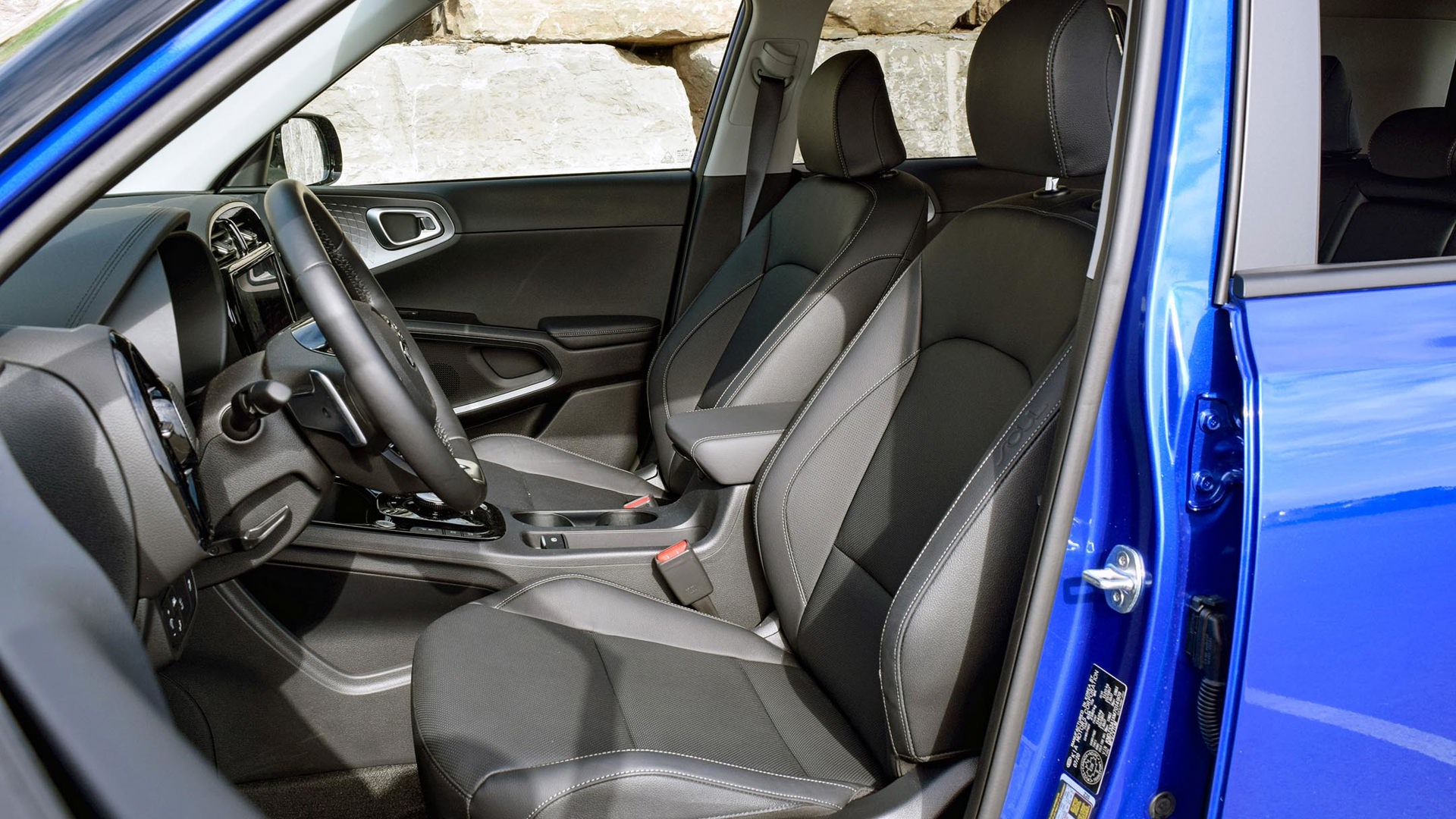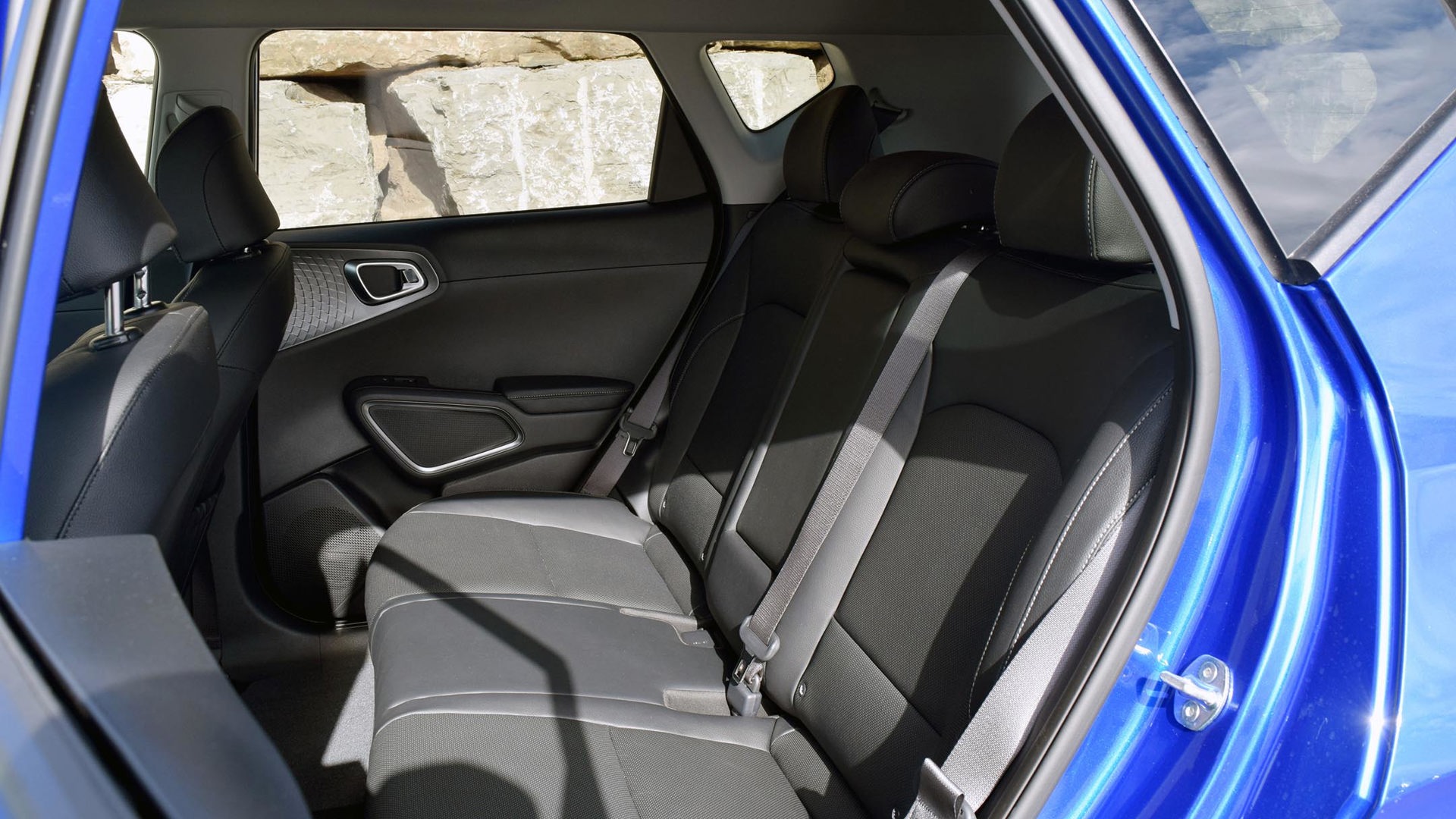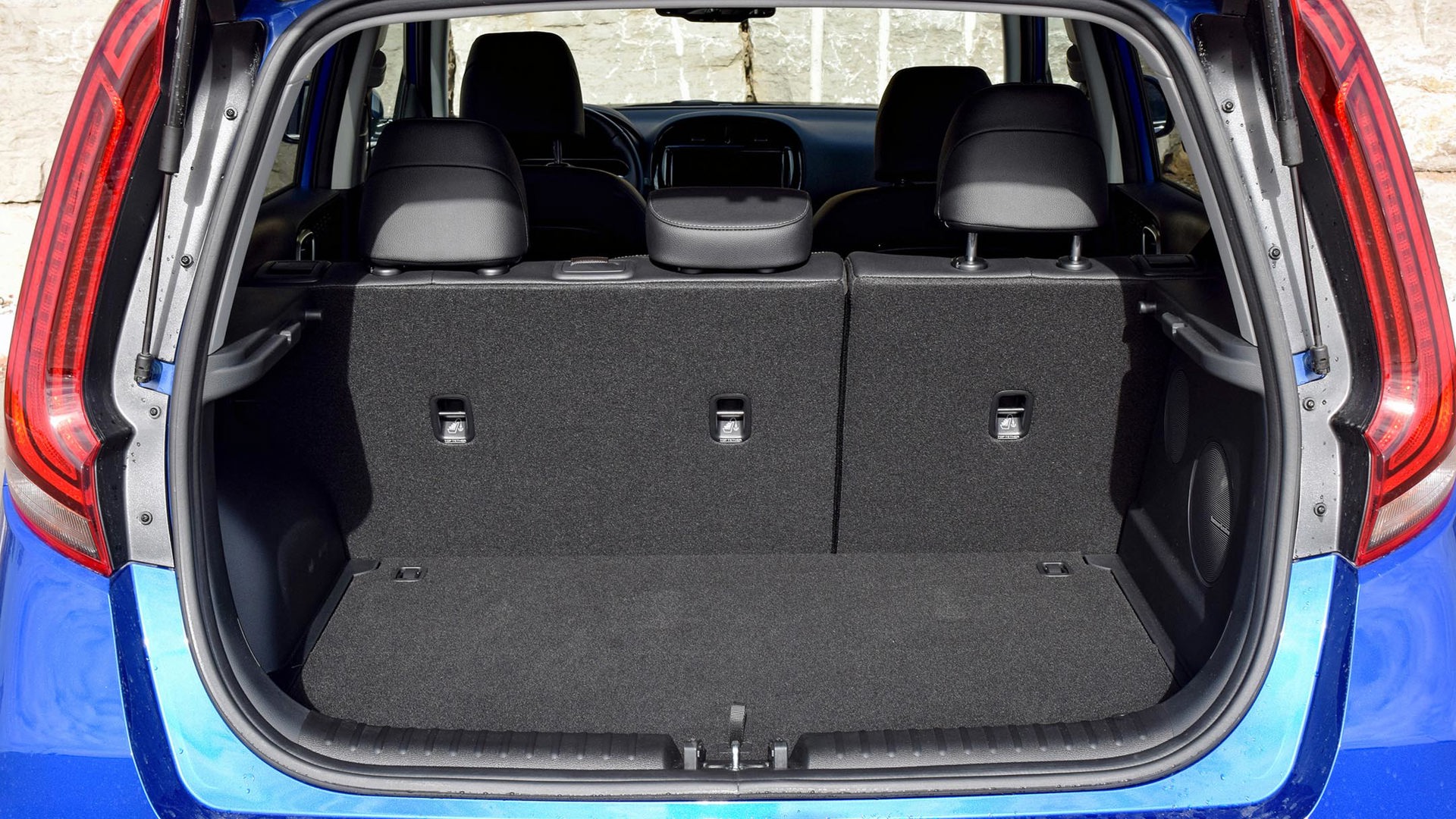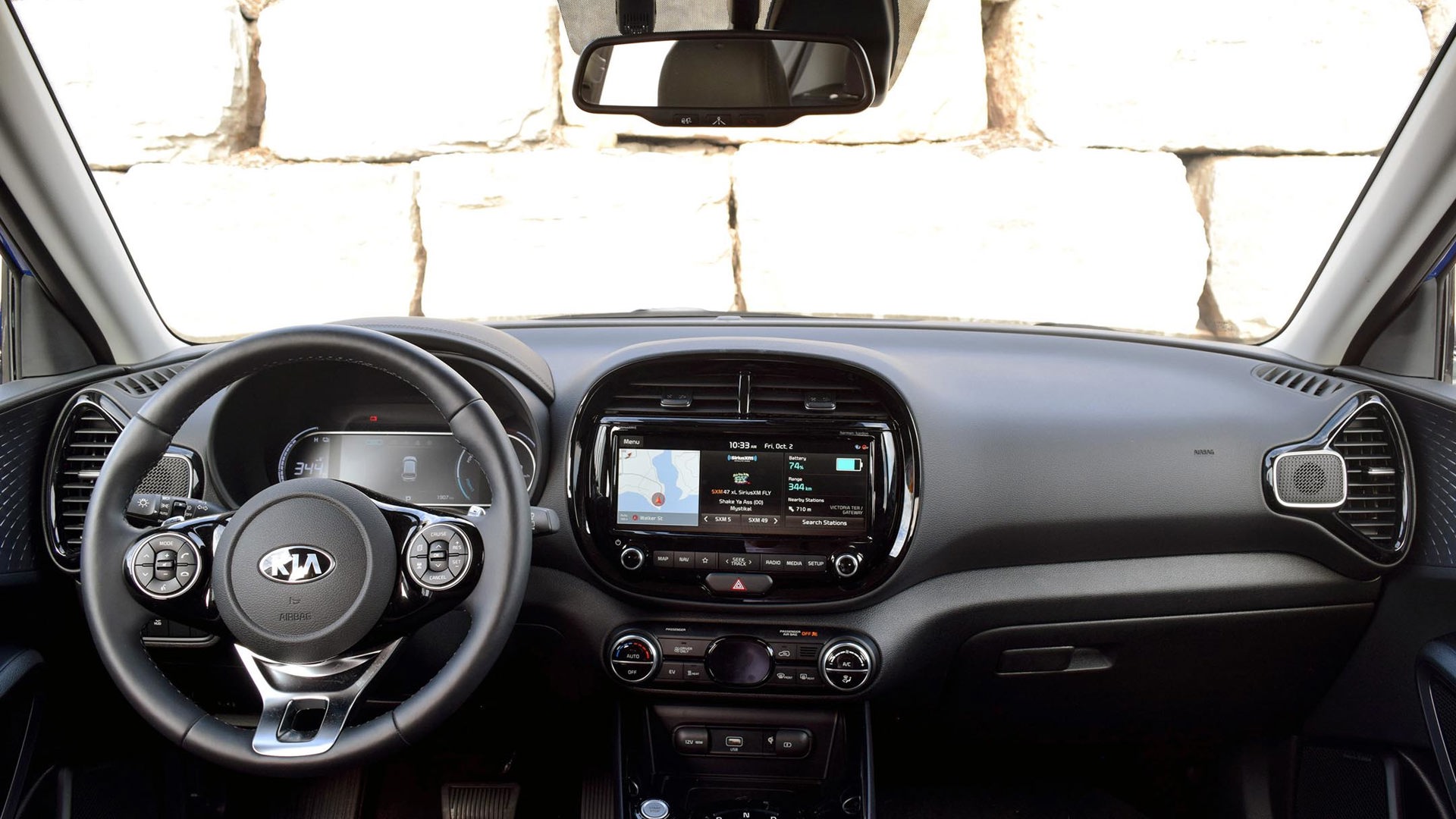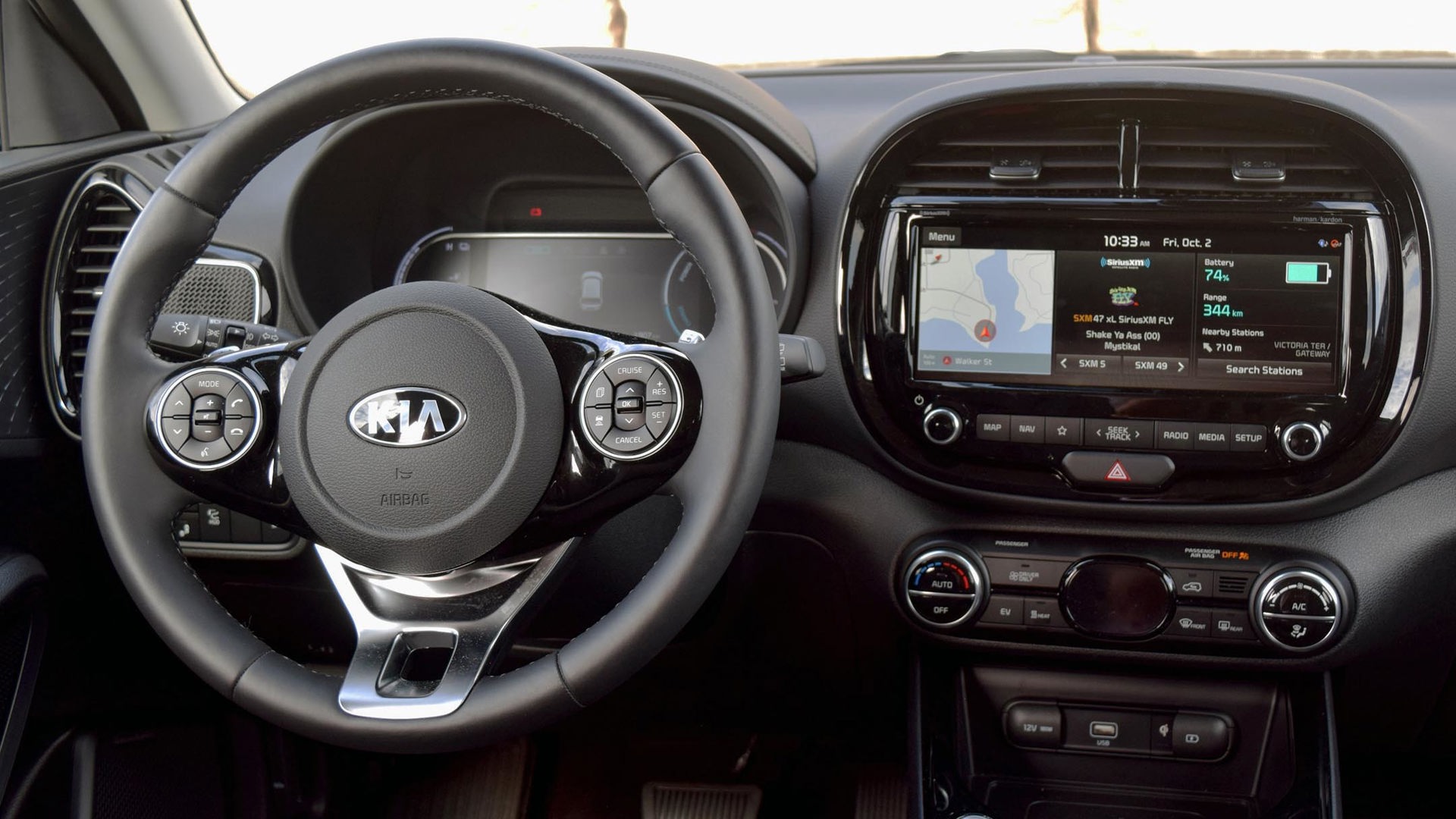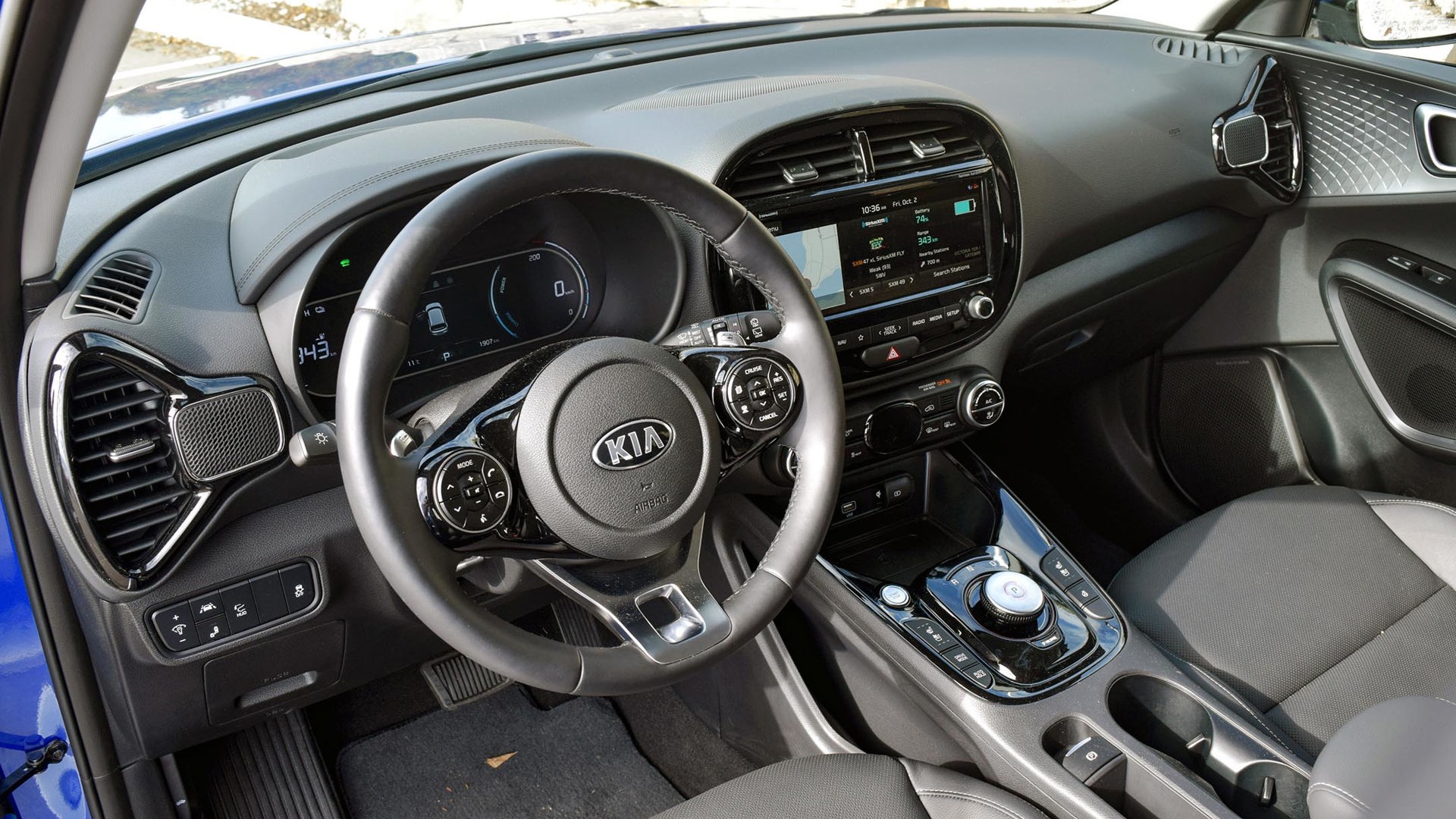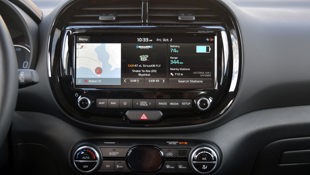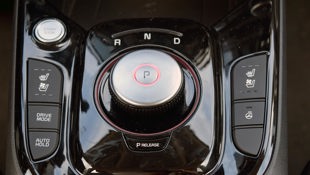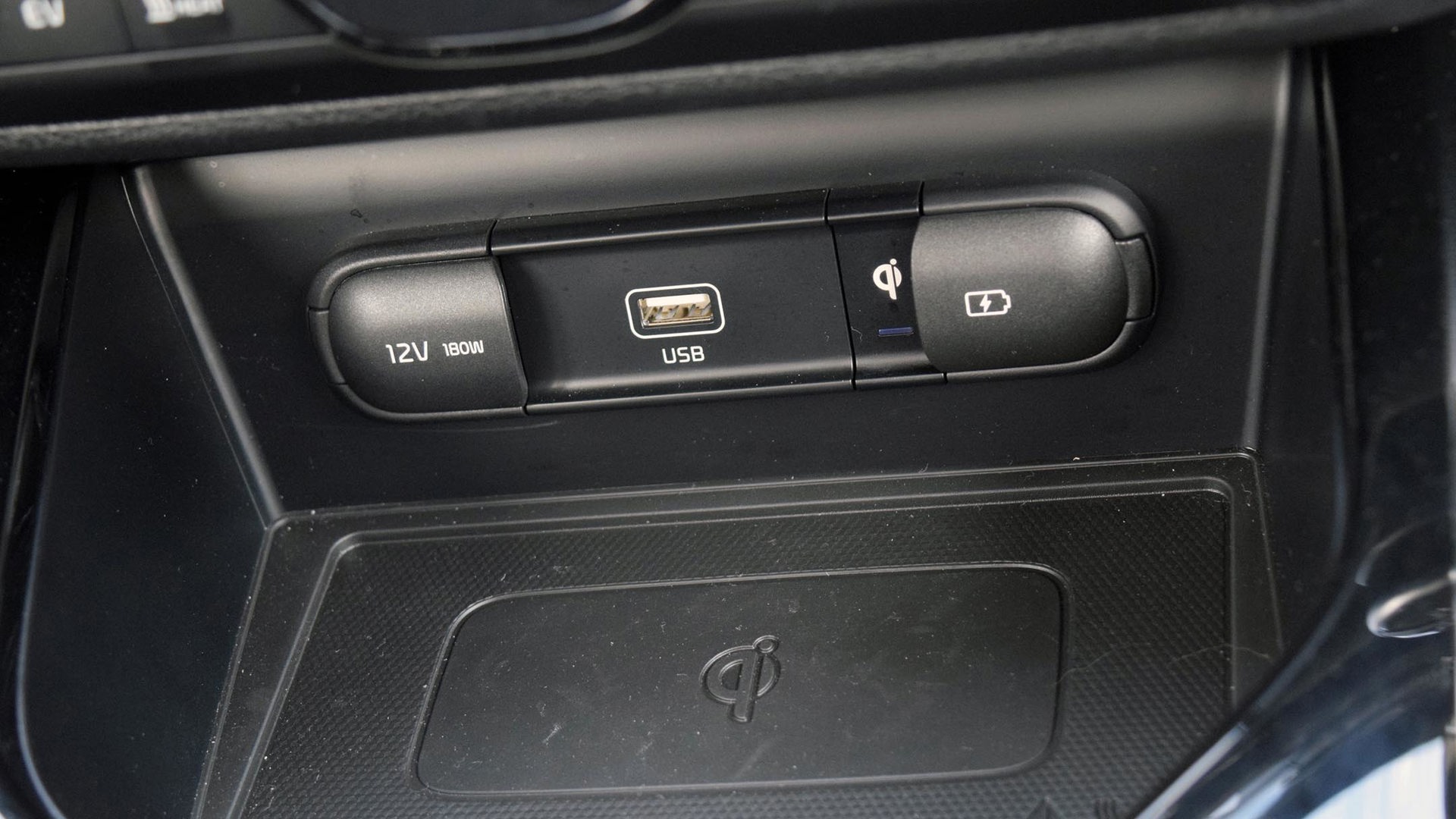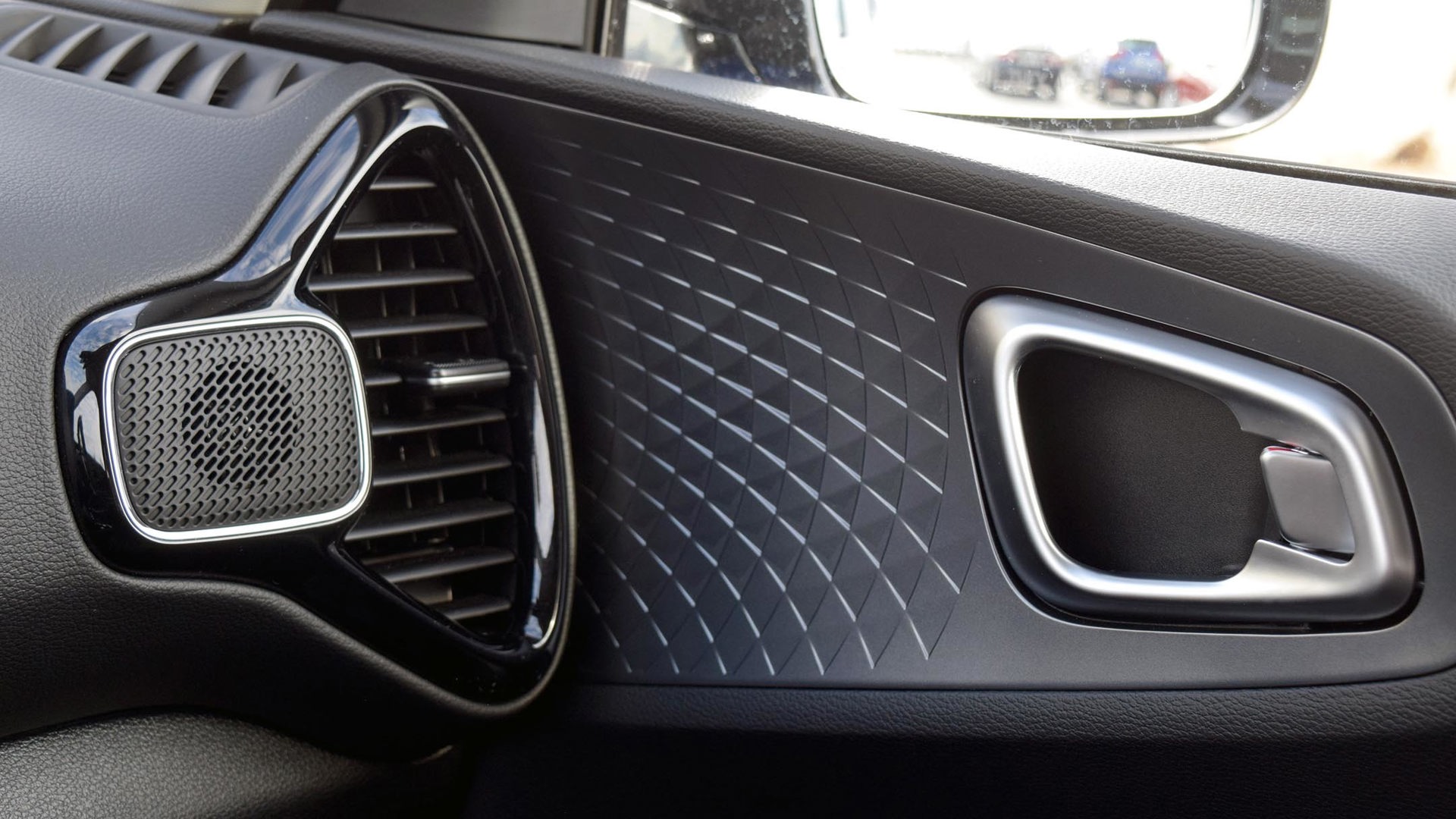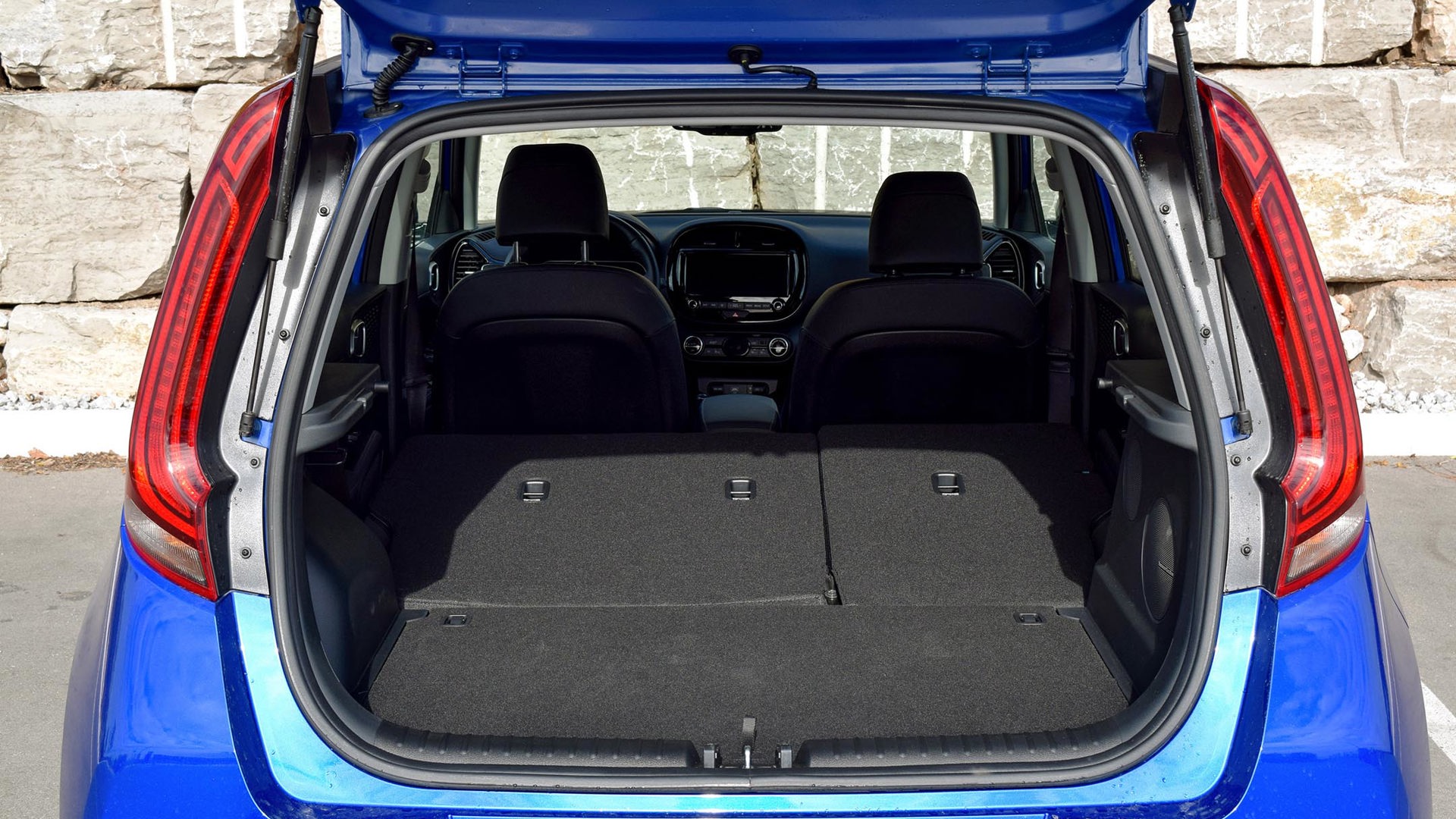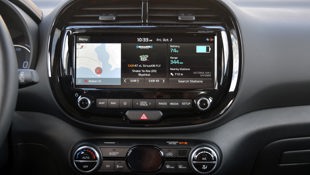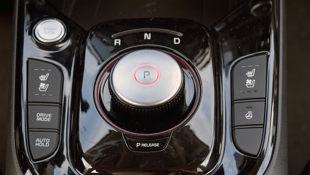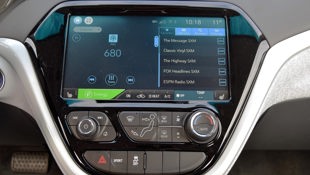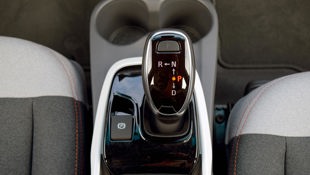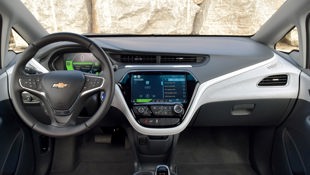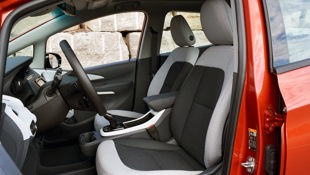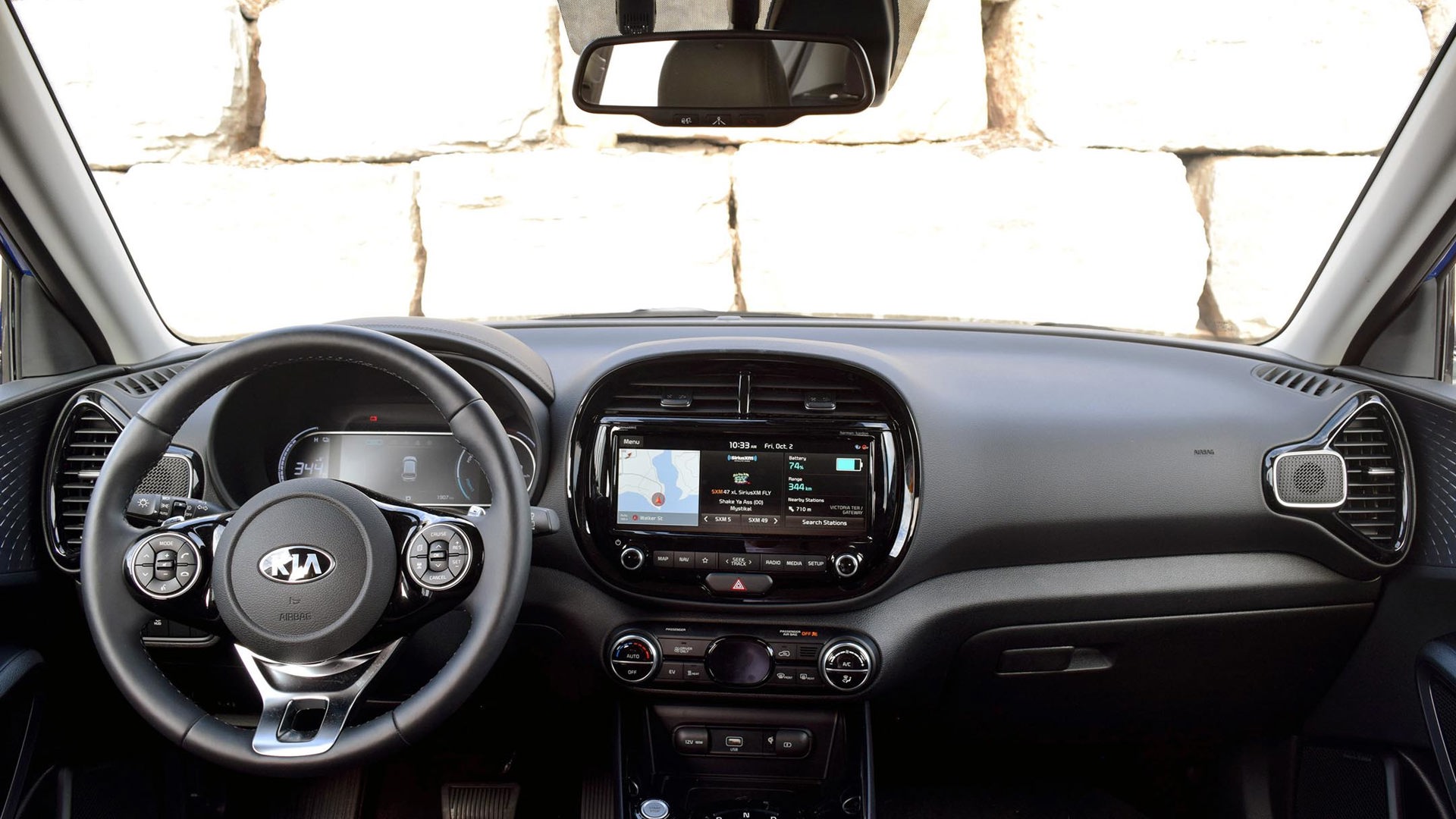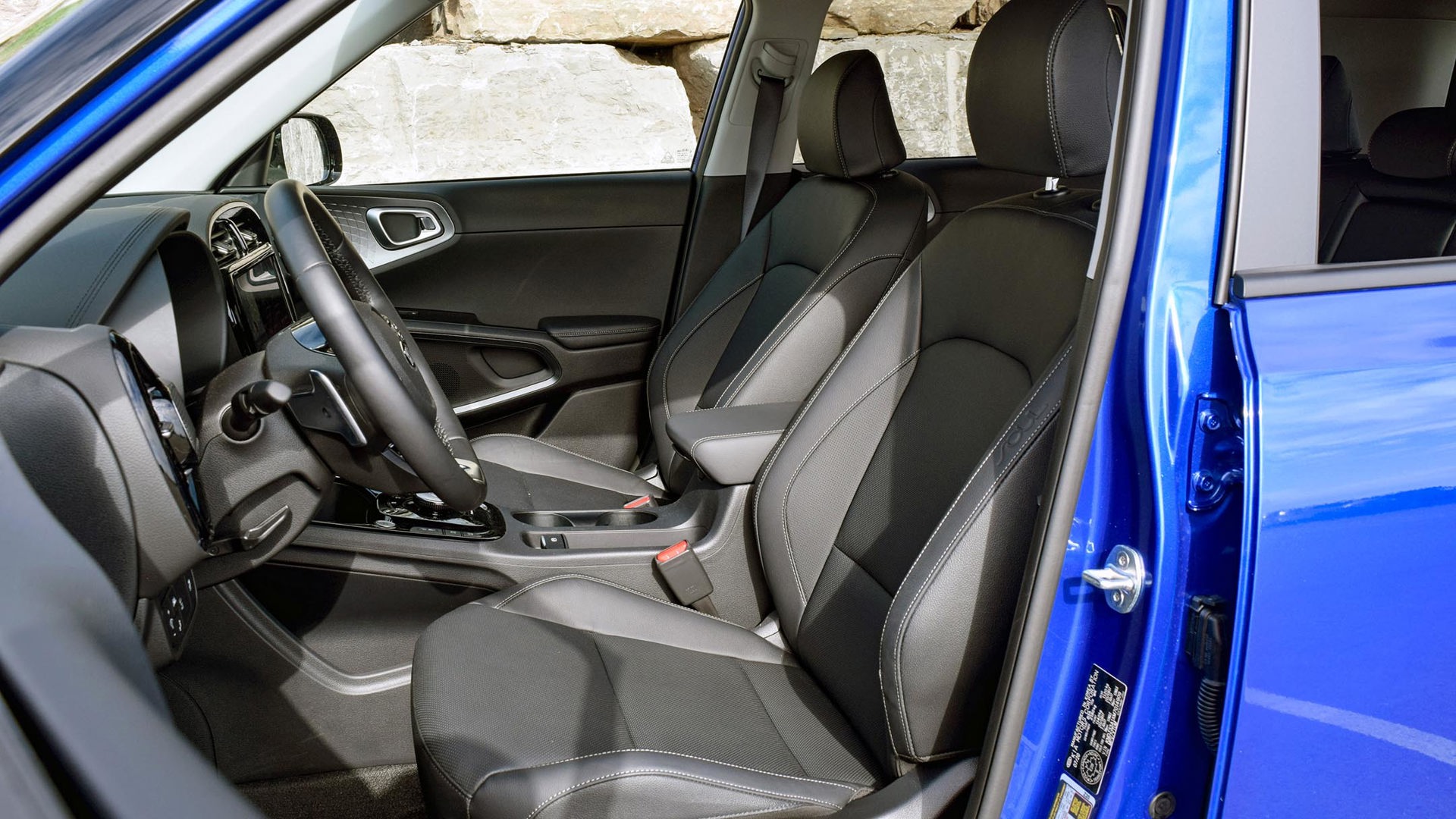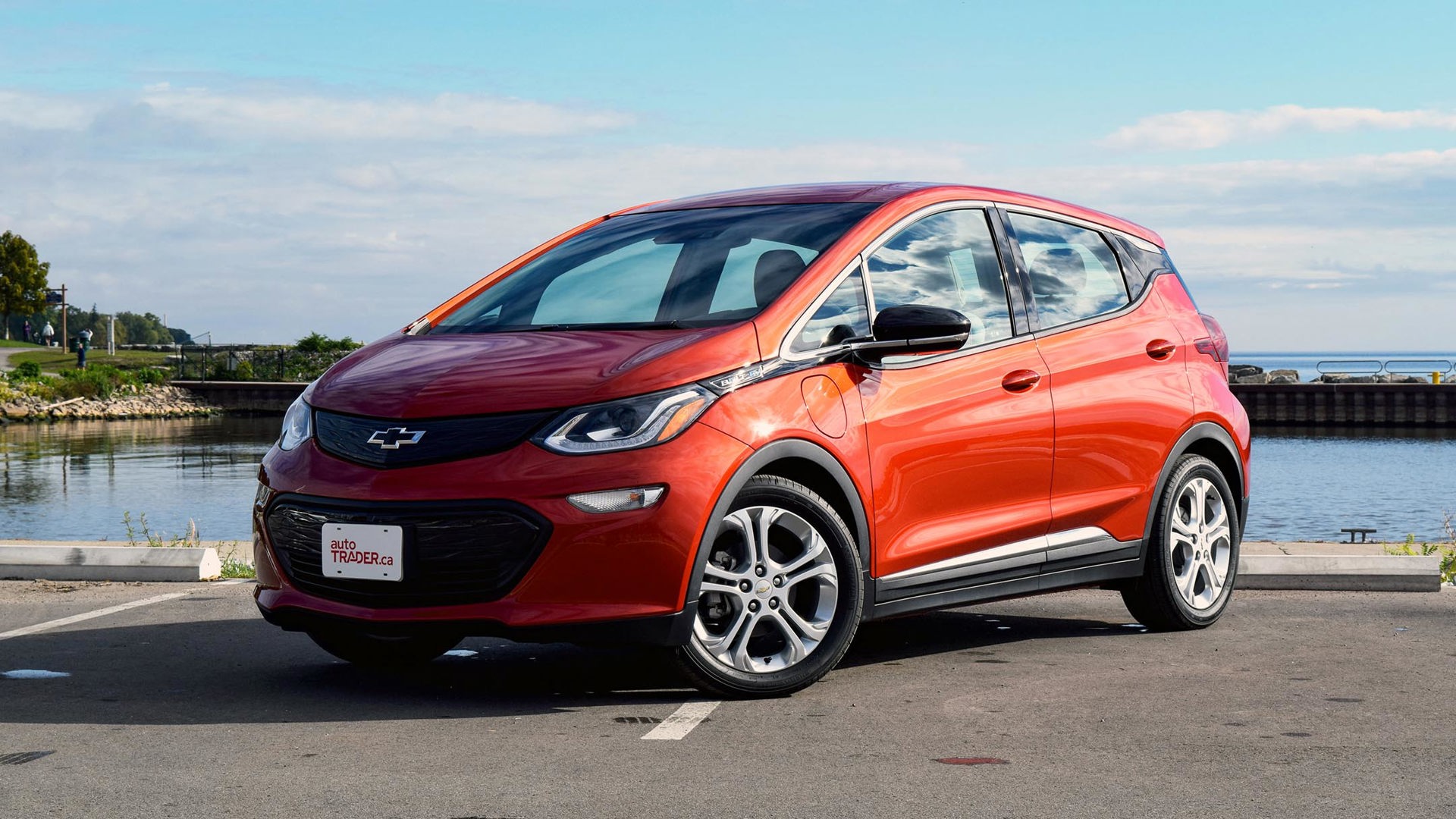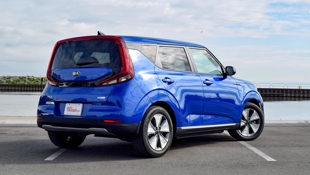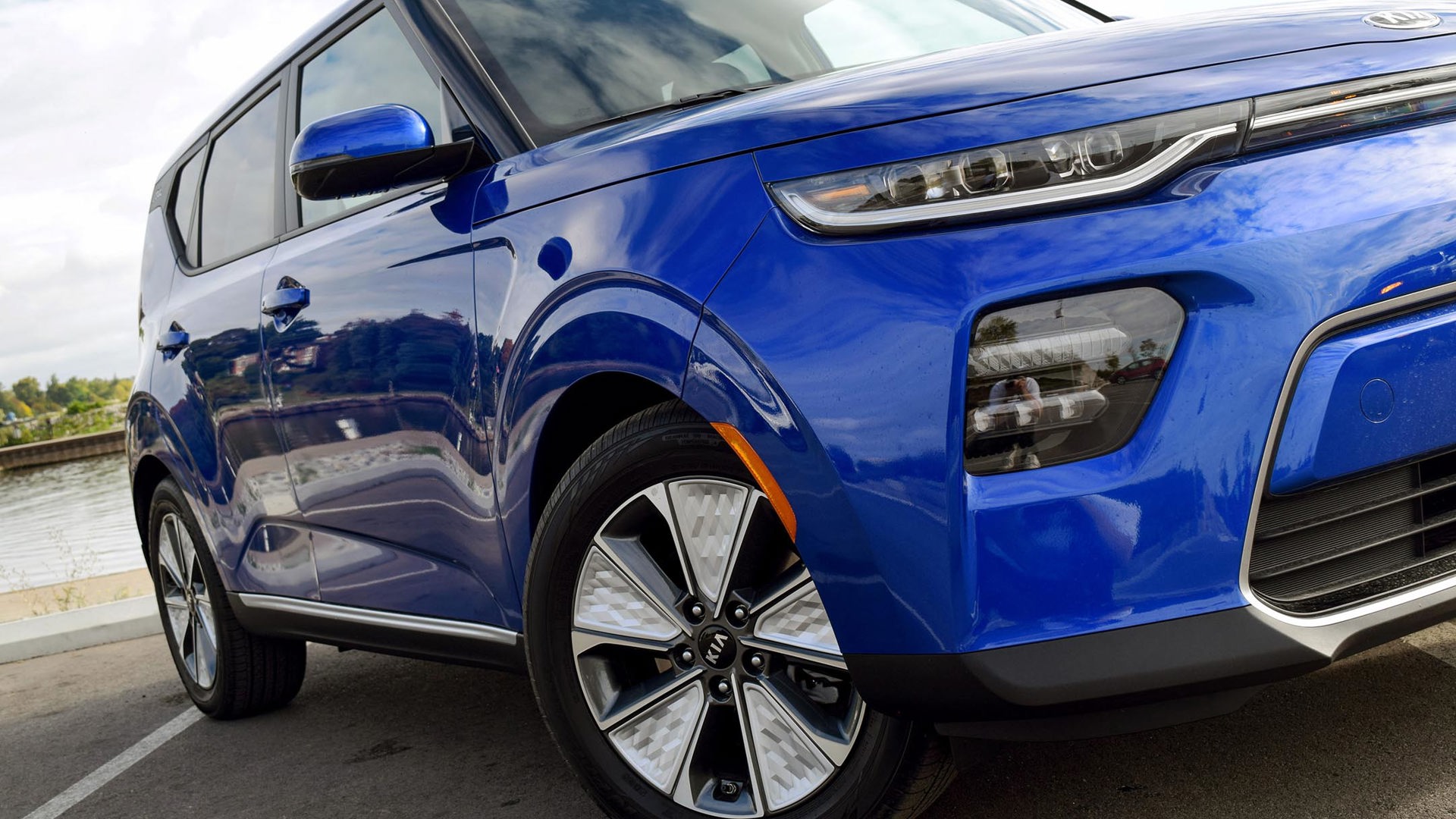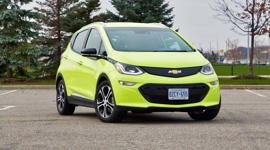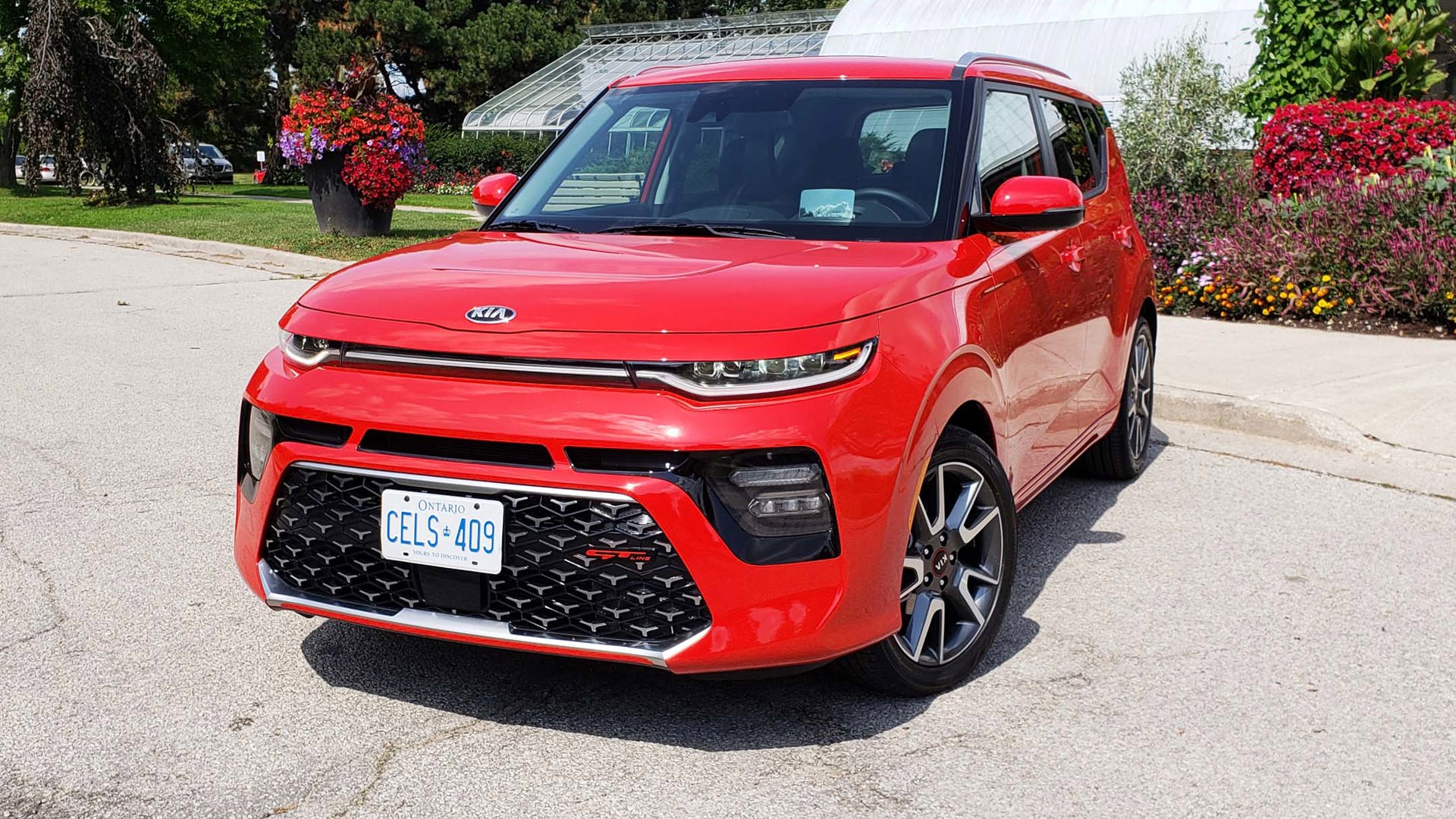Comparison Data
|
2020 Chevrolet Bolt LT
|
2020 Kia Soul EV Limited
|
|---|---|
|
Engine Displacement
150 kW
|
150 kW
|
|
Engine Cylinders
n/a
|
n/a
|
|
Peak Horsepower
200 hp
|
201 hp
|
|
Peak Torque
266 lb-ft
|
291 lb-ft
|
|
Fuel Economy
4.9 / 2.2 / 2.0 Le/100 km cty/hwy/cmb
|
1.9 / 2.4 / 2.1 Le/100 km cty/hwy/cmb
|
|
Cargo Space
479 / 1,603 L seats down
|
530 / 1,735 L seats down
|
|
Base Price
$44,998
|
$51,595
|
|
A/C Tax
$100
|
$100
|
|
Destination Fee
$1,800
|
$1,795
|
|
Price as Tested
$46,898
|
$53,490
|
|
Optional Equipment
None
|
None
|
We know you love epic comparisons, and this one is a showdown for the ages: the Bean versus the Box.
Don’t see it? It’s hard to miss! The 2020 Chevrolet Bolt EV and Kia Soul EV are perfect contrasts, not just in terms of design, but in philosophy, too. Each is a unique take on what it means to be a mainstream electric vehicle (EV), although both have the basics covered with generous driving ranges and approachable price tags.
Styling
First up, the Chevrolet Bolt, otherwise known as the Bean. The rounded profile and soft lines of this magical legume make us wonder if the folks at Chevrolet decided to design their own interpretation of the endlessly practical – and soon to be discontinued – Honda Fit. The downside is that the curvy character of the design highlights how upright the Bolt is, making it look a little like a shrunken-down minivan from some angles. [So what’s wrong with that? – Ed.] While the packaging isn’t particularly sexy, the most appealing part of the Bolt is that it’s unassuming.
The interior is spacious, and very little wraps around the driver or cabin. An open-concept design, it feels like you sit on the Bolt, rather than in it. The dash and controls don’t wrap around attractively, and some panels use a particularly coarse surface texture. Indeed, the low point of the cabin is the choice of materials, but it’s an easy vehicle to get used to. Most controls are easily accessible on the infotainment screen or the various switchgear, though the placement of the smartphone holder below the centre stack is so out of place you may end up forgetting that you stuck your device there in the first place.
The Soul EV stands in boxy contrast to the Bolt, with Kia employing the design motif for years to set this nameplate apart from other compact cars. It works well here, but there aren’t any additional creative cues to indicate that this is an EV. Anyone who found the Soul quirky and cool will still find this one eye-catching, and unfortunately, the opposite is likely true as well: those who aren’t a fan of the styling will still find the Soul unappealing.
Kia has toned down much of the outside-the-box design with the interior. Sure, there are oddities like the rotary gear selector; or the patterns found on the door panels, speaker grilles, and air vents. Otherwise, the Soul presents a modern Kia cabin. It’s well equipped and uses a variety of materials, hiding the lesser textures away from sight and feel. Unlike the Bolt, the Soul EV feels like you’re sitting inside the cockpit, with controls that wrap around the driver.
Chevrolet Bolt: 7/10; Kia Soul EV: 8/10
Safety
The Bolt has a strong track record when it comes to safety, earning a Top Safety Pick award from the Insurance Institute for Highway Safety (IIHS). Diving into the institute’s testing results, the Bolt fared well in most crash tests, with “good” scores in all but the tough passenger-side small overlap crash test, where it was deemed “acceptable.” The same goes for the lighting system, which was marked as acceptable, but the vehicle’s automatic high-beam headlights are a help, too. The IIHS was impressed with the Bolt’s crash prevention system, giving it top marks. The Chevy offers automatic emergency braking, forward collision warning, pedestrian detection, lane-departure warning, lane-keeping assistance, a blind-spot monitoring system, rear cross-traffic alert, and parking sensors. Sadly, little of that is standard equipment, making assistance features second in priority to affordability.
The Soul EV hasn’t specifically been tested by the IIHS, likely because the vehicle isn’t yet available in the United States, where these tests are conducted. The gas-powered Soul earned a Top Safety Pick, but that may not be an accurate description for the electric model, which carries extra weight and different powertrain packaging. Unlike the Bolt, many of the advanced safety features found on the Soul EV are standard, including blind-spot warning, lane-keeping assistance, driver attention detection, automatic emergency braking, and rear cross-traffic warning. It also comes with adaptive cruise control as standard equipment.
Chevrolet Bolt 7.5/10; Kia Soul EV: 8/10
Features
It also feels like the Soul EV delivers far more features and equipment than the Bolt. For example, you can get a sunroof, rain-sensing wipers, ventilated front seats, and a head-up display (HUD), not all of which are available on the Bolt. The Soul arrives with standard power seats that are heated, a heated steering wheel, automatic climate control, a wireless phone charger, and a 10.25-inch infotainment system with Android Auto and Apple CarPlay support. You can also get interior ambient lighting, an upgraded sound system, and heated rear seats.
The Bolt feels a little less loaded in comparison. Standard equipment includes automatic climate control, heated front seats, a heated steering wheel, a 10.2-inch infotainment system with Android Auto and Apple CarPlay support, and remote start. However, there are many available features, including a wireless phone charger, all those safety features mentioned earlier, a camera display in the rearview mirror, heated rear seats, and an upgraded sound system. As with all General Motors (GM) vehicles, the Bolt offers the OnStar telematics system and an in-car Wi-Fi hotspot.
Chevrolet Bolt: 7/10; Kia Soul EV: 9/10
User Friendliness
Between the two vehicles, the Bolt is more intuitive and easier to get into and drive, but don’t mistake that for suggesting the Soul is a handful or headache. The controls in the Bolt are pared down, easy to understand, and downright normal. The Soul offers extra ways to customize the driving experience, including multiple drive modes and selectable brake regeneration settings. The Bolt is much less customizable, with just a sport mode and a regen-on-demand paddle.
However, both the Bean and the Box are easy to see out of thanks to large windows and mirrors, and they also feature large rear doors – ideal for loading kids or cargo.
Chevrolet Bolt: 7.5/10; Kia Soul EV: 7.5/10
Practicality
Both are practical and spacious, but the Bolt is a bit more accommodating in the front seats, while the Soul is a better pick for those who travel often with rear passengers. Cargo capacity is close between the two vehicles, but the Soul offers more space, with 530 L of storage behind the rear seats, which expands to 1,735 L with them folded. The Soul also features a lower setting for its cargo room floor, expanding the cargo space by 130 L but eliminating the flat load floor with the seats folded.
The Bolt offers 479 L of storage behind its rear seats, which expands to 1,603 L with them stowed. It’s still spacious, but take note: the Bolt doesn’t feature a flat load floor when you fold the second row.
Chevrolet Bolt: 7.5/10; Kia Soul EV: 8/10
Comfort
With its airy and spacious cabin, the Bolt is a nice place to be. The upright seating position brings a crossover-like experience to driving, which should certainly appeal to those who don’t like a crowded-feeling cabin. The seats aren’t the plushest or most supportive, and the headrests take some getting used to due to an aggressive angle that makes it feel like the car is encouraging you to look down – maybe so you don’t forget your phone is in that hidden compartment...
On the road, the Bolt rides well; that is, until you get into the bumpy stuff. Conquering cobblestones – or maybe the potholes aplenty during construction season – will take some patience, as the suspension can feel a tiny bit crashy and loud in these situations. Keep it on smooth pavement and you’ll be much happier, as the Bolt doesn’t display much body roll. The brakes feel natural, with a smooth transition from traditional stopping power to regenerative braking. There’s a paddle on the left of the steering wheel to initiate a harsher application of regenerative brakes, which takes more practice to get right.
The electrified Soul feels more natural in almost every way. The seats are softer and more comfortable (especially the headrests), and while the steering feels a bit lighter, the rest of the drive is just as smooth as the Bolt’s. There’s only a bit of extra motion in the Soul that was felt when crossing train tracks, for example; otherwise, the vehicle is extremely easy to get used to and drive.
Chevrolet Bolt: 7/10; Kia Soul EV: 8/10
Power
There are two power and battery configurations offered by Kia: the base Soul EV, designated as the Premium model, makes 134 hp and 291 lb-ft of torque. The next step up is the Soul EV Limited, which we tested. This model delivers 201 hp and 291 lb-ft of torque.
The Bolt isn’t far behind, with a motor that makes 200 hp and 266 lb-ft of torque. Off the line, the Kia feels a touch more aggressive, and that extra torque is the difference, but when cruising around, it’s hard to pinpoint whether one model feels more powerful than the other. Making a pass in either isn’t difficult, though getting aggressive does noticeably drain the battery.
The extra drive modes found in the Kia do provide more options for drivers. For example, a special Eco+ mode can limit the top speed of the vehicle, ensuring you eke out the most of your trip when puttering around town. The Bolt has fewer options and extras to fiddle with, so it may be the better choice for someone who wants the full experience of an EV without any extra considerations.
Chevrolet Bolt: 7/10; Kia Soul EV: 8/10
Driving Feel
While both of these vehicles are EVs with similar price points and driving ranges, it’s clear after driving them that they target different buyers. The Bolt may fit best with first-time EV buyers and those who aren’t as enthusiastic about the powertrain as they are about emissions-free driving. It’s simple to use, with traditional controls and a familiar driving experience. Nothing feels out of the ordinary in the Bolt, and it doesn’t reinforce the fact that you’re piloting an EV at every opportunity. It offers a perfectly honed driving experience with no extra frills. One thing to note is that the car features a subtle driving coach, where an orb gravitates between power and regen on a small portion of the screen to nudge the driver toward battery-friendly driving habits.
For some buyers, that will suit them well. After all, what’s a car for, if not to get from point A to point B? And if it emits fewer greenhouse gas emissions in the process, that’s great. However, some EV pilots may prefer a car that feels that much different than the combustion engine experience. The Soul EV delivers here, with plenty of driving modes and features that make it stand out as an electric car over anything else. Variable regenerative brake settings can let the vehicle coast freely or feel close to a one-pedal driving experience, and the more conservative drive modes can help draw out more range from the battery. I wish the Soul EV had the same display as the Hyundai Kona EV, which shows you the impact of your regenerative brakes, but sadly, that isn’t found here. While both cars offer a polished driving experience, I think the versatility of the Soul gives it an advantage.
Chevrolet Bolt: 7/10; Kia Soul EV: 8/10
Fuel Economy
The more affordable Soul EV Premium uses a 39.2-kWh battery that’s good for 248 km of range. This model takes just under one hour to recharge using a DC fast charger, while a Level 2 charger will do the trick in six hours and 10 minutes. A Level 1 charger, meanwhile, will take as long as 36 hours. The more expensive Soul EV Limited is the more accommodating one. Not only does it have a more powerful engine, but it uses a 64-kWh battery that’s rated for 383 km of range. Charging this to full using a DC fast charger will take anywhere between 60 to 75 minutes depending on the output. A Level 2 charger will take nine and a half hours, while a Level 1 charger will be a 59-hour affair.
The Bolt, on the other hand, uses a 66-kWh battery that is rated for 417 km. Charging it up to full using a DC fast charger will take about two and a half hours, while a Level 2 charger will charge the vehicle in about 10 hours. The Level 1 charger does it in 55 hours. The Bolt is a tiny bit more efficient, using 17.8 kWh/100 km, while the Soul uses 18.6 kWh/100 km.
Chevrolet Bolt EV: 8/10; Kia Soul EV: 7.5/10
Value
The Bolt EV starts at $44,998 for a base LT model. Extra costs include some paint options that range from $495 to $595, and two packages of safety features for $795 each. There’s also a wide selection of ways to customize the Bolt LT, with black badges, different floor mats, and side sills. The Bolt EV Premier is $50,298 and comes with half of those safety features already, leaving one on the options list at a $795 price. The Bolt carries a $1,800 freight fee and is eligible for the $5,000 federal government incentive.
The Soul EV Premium starts at $42,595 and charges $250 for colourful paint finishes. The Limited model with the extra range is offered for $51,595. Both models are subject to a $1,795 delivery fee, and both are eligible for that $5,000 incentive as well.
With more range, but fewer options, the Bolt EV LT is the better bargain, but if you’re looking for a more complete EV experience, the Soul EV Limited will deliver as it comes with all the features and a few more standout items that the Bolt doesn’t offer.
Chevrolet Bolt: 8/10; Kia Soul EV: 7/10
The Verdict
At long last, the Bean vs. Box showdown is over. The Bolt EV shouldn’t be discredited just yet, but it is aging. It brought affordable, long-range EVs to the masses, and is still competitive despite the newer and more feature-filled models hitting the market. If all you want is a long-range EV, the Bolt is the best pick, with more range for a lower price. But if you’re looking for a little more than that, including features and practicality, then the Soul EV delivers, offering a more customizable and versatile driving experience. Give it up for the Box!
